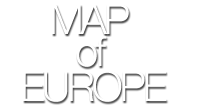
- Map of Europe | Europe Map

Europe Flag Map
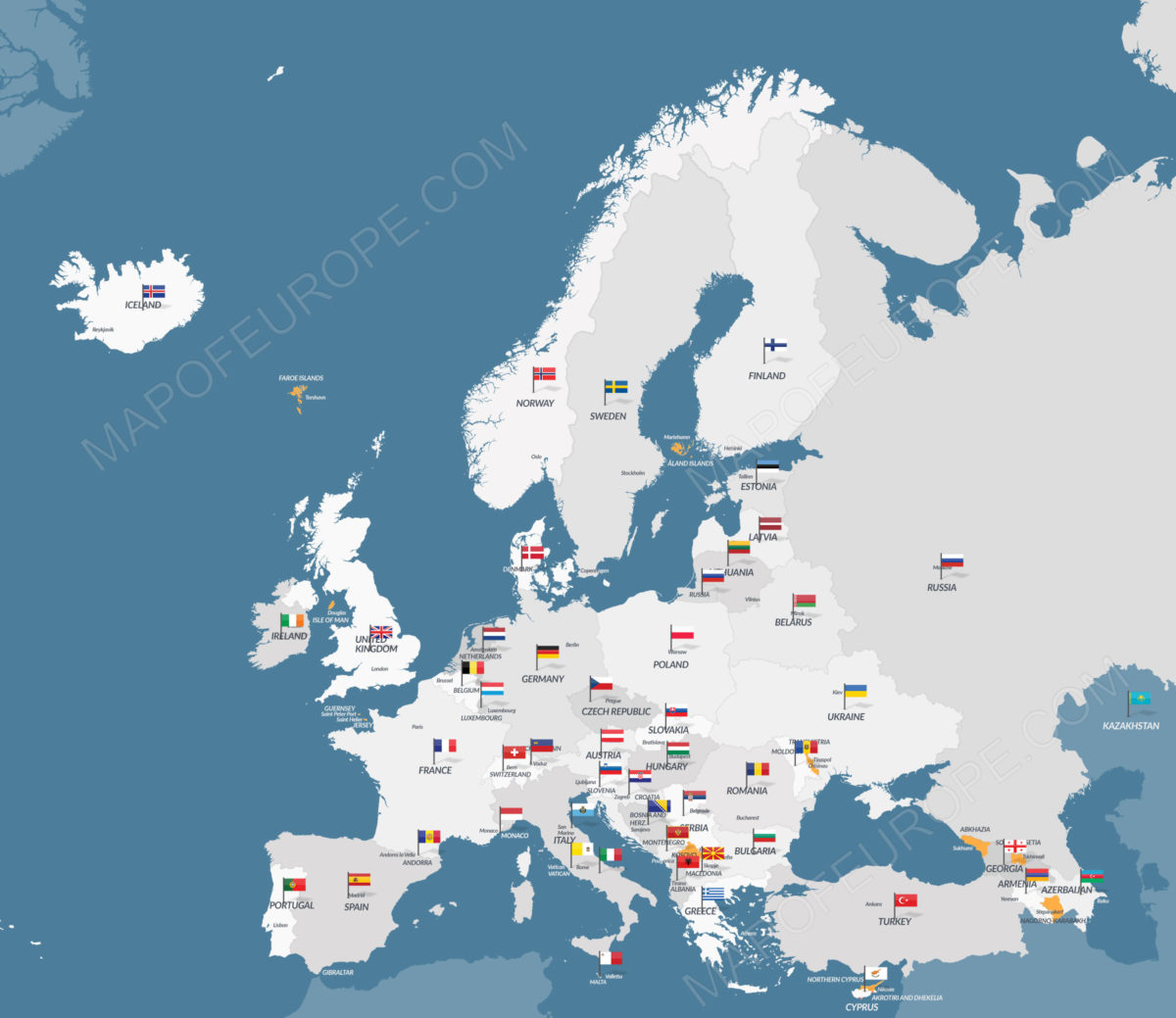
Unfurling the Past: An Introduction to the Flags of Europe
In the rich tapestry of international symbolism, flags hold a revered place. Every color, symbol, and design element chosen encapsulates a nation’s identity, serving as a vibrant, visual distillation of its history, culture, and values. Europe, with its diverse array of countries, is a fascinating study in this context. This article is the first in a series exploring the intricate tapestry of European flags and their significance.
Flags have been an intrinsic part of human civilization, used for thousands of years as symbols of identity and sovereignty. The concept of a national flag, however, is relatively modern, gaining prominence in the 18th century with the rise of nation-states. In Europe, many countries adopted their current flags during the 19th and 20th centuries, often associated with pivotal events like revolutions, independence movements, or the formation of new political systems.
Every flag tells a story, symbolizing its nation’s history, geographical features, religious beliefs, or political ideologies. The tricolor design—three equal horizontal or vertical stripes—is a common pattern in European flags, inspired by the French flag introduced during the French Revolution in the late 18th century. This design has been adapted by various countries, including Italy, Germany, and Ireland, each assigning their unique meanings to the colors.
The history of the European flags is indeed diverse. For instance, the flag of Denmark, known as the ‘Dannebrog’, is one of the oldest continuously used flags in the world. According to legend, it fell from the heavens during a battle in the 13th century. On the other hand, the flag of Bosnia and Herzegovina is relatively recent, adopted in 1998, signifying the nation’s aim for unity and its connection to Europe.
Studying a map of Europe with flags enables us to understand the shared and divergent paths these nations have taken. For instance, Scandinavian flags—Denmark, Sweden, Norway, Finland, and Iceland—share a common design feature, the Nordic Cross, symbolizing their shared cultural and historical ties. Meanwhile, Eastern European flags, such as those of Russia, Serbia, and Bulgaria, incorporate pan-Slavic colors—red, white, and blue—reflecting their Slavic heritage.
Flags are also imbued with deep symbolic meaning. For example, the flag of Greece, with its nine blue and white stripes, symbolizes the nine syllables in the phrase “Freedom or Death,” a motto from the Greek War of Independence. Meanwhile, the 12 golden stars on a blue field in the flag of the European Union represent unity, solidarity, and harmony among the peoples of Europe.
Flags are not static symbols; they evolve as nations change. With shifts in political regimes, societal values, or national sentiment, countries may modify their flags to better represent their current state. The flag of Spain, for instance, has seen several iterations corresponding to the nation’s tumultuous history, from monarchy to republic, civil war, dictatorship, and eventually democracy.
Flags, with their burst of colors and intricate designs, are far more than mere fabric fluttering in the wind. They are narratives in themselves, capturing the spirit and journey of nations. As we navigate through the map of Europe with flags, we unfurl the diverse stories of resilience, unity, faith, and freedom. These vibrant symbols serve as silent yet eloquent testimonials of Europe’s rich past and present.
Emblems of Identity: Exploring the Flags of Western Europe
As we continue our journey through the fascinating world of European flags, our focus turns to Western Europe. Here, we find some of the world’s most recognized flags, each carrying a story steeped in historical and cultural significance. This exploration uncovers the deeper meanings embedded in the vibrant flags fluttering over the landscapes of France, Germany, Spain, and more.
The flag of France , the Tricolore, is one of the most influential designs in the world, inspiring numerous other countries’ flags. Comprising three vertical stripes of equal width in blue, white, and red, the Tricolore was born in the crucible of the French Revolution. The blue and red are the traditional colors of Paris, while the white symbolizes royalty. However, the white later took on the symbolism of equality during the revolution, while the blue and red came to represent freedom and brotherhood.
Next on our Europe map with flags is the German flag . The flag, a tricolor of black, red, and gold horizontal stripes, has roots reaching back to the early 19th century and the liberal democratic ideals of the time. The colors originate from the uniforms of the German soldiers during the Napoleonic Wars. Black, red, and gold also became symbols of the democratic, centrist, and republican political forces in the 1848 Revolutions that swept across Europe.
The Spanish flag , or ‘la Rojigualda,’ is a relatively recent creation, adopted officially in 1981. It features three horizontal stripes: the top and bottom stripes are red, and the wider middle stripe is golden yellow. On the left side of the yellow stripe is the country’s coat of arms. The colors were chosen for their visibility at sea, as the flag’s original purpose was for naval identification. The coat of arms encapsulates Spain’s complex history, with symbols representing the historical kingdoms of Castile, Leon, Aragon, and Navarre.
As we move to the Iberian Peninsula, we find the Portuguese flag , a vertical bicolor of green and red, with the lesser portion green and the larger red. Overlapping the two colors near the hoist side is the Portuguese coat of arms, composed of the country’s traditional shield and behind it, an armillary sphere, a navigation tool highlighting Portugal’s seafaring history. The green represents the hope for the future, and the red stands for the blood of those who died serving the nation.
Our journey of Western Europe concludes with the flag of Belgium , a vertical tricolor of black, yellow, and red. The colors originate from the Duchy of Brabant’s coat of arms, a historic state in the southern Netherlands and Belgium, and the sequence was modeled after the French flag. The black signifies the country’s determination and strength, the yellow stands for its wealth, and the red symbolizes the courage and valor of the people.
The flags of Western Europe represent a rich tapestry of history and ideals, from revolutionary fervor and liberal values to seafaring heritage and national courage. Each flag is a unique emblem of the country’s identity, capturing its spirit and resilience.
Symbols of Unity and Heritage: An Exploration of the Flags of Eastern Europe
Venturing into the eastern region of the European continent, our voyage through the flags of Europe brings us to lands where history, heritage, and a strong sense of unity intertwine. From the bold colors of the Russian flag to the stirring emblem of Poland, the flags of Eastern Europe mirror the enduring spirit and rich history of these nations.
Undoubtedly one of the most recognized flags across the globe, the flag of Russia features a simple but striking tricolor design. Comprising horizontal stripes of white, blue, and red from top to bottom, the Russian flag is an iconic representation of the country. The white stands for nobility and frankness, the blue signifies faithfulness, honesty, and wisdom, and the red embodies courage, generosity, and love. These colors also bear pan-Slavic symbolism, indicating the shared heritage of the Slavic nations.
On our map of Europe with flags, we move southwest to the flag of Poland . This flag displays a horizontal bicolor of white over red. These colors have been associated with Poland since the Middle Ages, with the white symbolizing peace and purity and the red standing for valor and bravery. While the design might seem simplistic, it carries profound meaning for Poles, signifying their enduring spirit and resilience.
Heading south, we come to the flag of Ukraine , another horizontal bicolor, this time of blue over yellow. The flag reflects the country’s picturesque landscapes, with the blue symbolizing the sky and the yellow representing the vast wheat fields. This vivid imagery of nature underscores Ukrainians’ deep-rooted connection with their land.
Moving towards the Balkan region, we encounter the flag of Romania , a vertical tricolor of blue, yellow, and red from the hoist side. The blue signifies liberty, the yellow represents justice, and the red embodies fraternity. Interestingly, these colors correspond to the country’s geography: blue for the sky, yellow for the fields, and red for the blood of its defenders.
Finally, we explore the flag of Bulgaria , a tricolor of white, green, and red horizontal stripes. The white symbolizes peace, the green represents the country’s agricultural wealth, and the red stands for the courage and valor of its people. The current design was adopted in 1879 following the country’s liberation from Ottoman rule, symbolizing a new era of independence and progress.
The flags of Eastern Europe reflect a profound connection to their historical past, national identity, and shared cultural heritage. While the designs might vary, their core essence resonates with a powerful sense of unity and patriotism.
Northern Lights and Crosses: An Insight into the Flags of Northern Europe
The region of Northern Europe, characterized by its stunning landscapes and resilient cultures, presents a distinct collection of flags. This chapter of our voyage through the European flag map brings us to this unique region, known for its shared Nordic symbol – the cross. Let’s delve into the flags of Sweden, Norway, Denmark, and others, which collectively narrate a tale of unity and distinct national identities.
Our journey starts with the flag of Sweden , known as the ‘Sveriges flagga’. This flag’s design is a gold or yellow Scandinavian cross extending to the edges on a field of blue. The blue symbolizes loyalty, justice, and truth, while the yellow represents generosity. This flag design, like many others in the region, is a variation of the Dannebrog, the flag of Denmark.
Heading westward on our map of Europe with flags, we find the flag of Norway , called the ‘Norges flagg’. This flag features a red field with a blue cross outlined in white, shifted towards the hoist side. The colors are said to have been influenced by the flags of France, the United States, and the United Kingdom, symbolizing liberty, loyalty, and humanity. The cross, as in many Northern European flags, speaks to the region’s historic Christian faith.
Next, we turn to the flag of Denmark , known as the ‘Dannebrog’. The flag features a white Scandinavian cross on a field of red. According to legend, the flag fell from the sky during a battle in Estonia in the 13th century and was caught by the Danish king, turning the tide of the battle. This flag is one of the oldest in the world, symbolizing Danish valor, honor, and the nation’s Christian heritage.
As we journey to the island nation of Iceland, we encounter the flag of Iceland , or ‘Íslendinga fáni’. The flag is blue with a white cross and a red cross inside the white, shifted towards the hoist side. The blue symbolizes the surrounding Atlantic Ocean, the white represents the snow that covers the country in winter, and the red stands for the country’s volcanic fires.
Lastly, we explore the flag of Finland , known as the ‘siniristilippu’ or blue cross flag. A white background features a blue Scandinavian cross, symbolizing the many lakes throughout the country and the blue skies above. The white background represents the snow that blankets the Finnish landscape in the winter.
The flags of Northern Europe are visual embodiments of the shared culture and collective histories of these nations while simultaneously signifying their unique national identities. The prevalent cross symbol underscores the Christian faith, while the distinct color palettes encapsulate the specific essence of each country.
Basking in the Sun: A Look at the Flags of Southern Europe
The sun-drenched landscapes of Southern Europe provide the backdrop for the fifth chapter in our exploration of the European flag map. Here, the Mediterranean’s azure waters meet historical grandeur, captured eloquently in the flags of Italy, Greece, Portugal, Spain, and more. Each flag bears distinct symbols, colors, and designs that encapsulate the vibrant spirit and rich history of these nations.
First on our map of Europe with flags is the iconic flag of Italy , known as ‘Il Tricolore’. This flag showcases a vertical tricolor of green, white, and red. The green represents the country’s land, the white symbolizes the snow-capped Alps, and the red denotes the bloodshed during the Wars of Italian Independence. Together, these colors capture the essence of Italy – its rich landscapes, historical upheavals, and resilient spirit.
Next, we turn to the flag of Greece , known as the ‘Galánolefki’ or the ‘blue and white’. The flag features a blue cross on a white field in the canton, with the rest of the flag bearing nine alternating blue and white stripes. The cross symbolizes Greek Orthodoxy, the established religion of Greece. The nine stripes represent the nine syllables of the phrase ‘Ελευθερία ή Θάνατος’ (Eleftheria i Thanatos), meaning ‘Freedom or Death’, the rallying cry of the Greek War of Independence.
Our journey then leads us to the flag of Portugal once again, where the green and red vertical fields embody hope and the blood of those who fought for the nation, respectively. The complex coat of arms at their intersection narrates Portugal’s grand history.
Revisiting the flag of Spain , we find a vibrant design that effectively incorporates the national coat of arms. The three horizontal stripes – two red and one, wider, yellow – embody the Spanish spirit, while the coat of arms, with its intricate elements, represents the country’s rich historical heritage.
Finally, we delve into the flag of Malta , a simple yet profound design. Comprising two vertical halves of white and red, it features the George Cross, outlined in red in the top left corner. The George Cross was awarded to Malta by King George VI of the United Kingdom in 1942, during World War II, as a symbol of bravery.
The flags of Southern Europe, steeped in history and cultural significance, serve as enduring emblems of national identity. They represent not only the geographical landscapes and historical events of these nations but also the values and aspirations of their people.
In the Heart of the Continent: Flags of Central Europe
As we travel deeper into the European continent, the Central European region unfolds with a rich amalgamation of cultures, histories, and natural beauty. The flags of this region, including those of Germany, Austria, and Switzerland, mirror this diversity. Each flag not only embodies its respective nation’s identity but also serves as a testament to its unique history and values.
Retracing our steps to the flag of Germany , we reacquaint ourselves with its iconic tricolor design. The flag features horizontal stripes of black, red, and gold, colors linked to the democratic, centrist, and republican movements that emerged in the 19th century. This flag symbolizes Germany’s continuous commitment to these values.
Further south, we find the flag of Austria , a simple yet powerful design with a rich history. The flag comprises horizontal bands of red and white, with a legend linking the colors to Duke Leopold V’s blood-stained battle garment. The red and white hence stand as symbols of valor and sacrifice for the nation.
Our journey then leads us to the unique flag of Switzerland , one of the only two square sovereign-state flags globally. The flag presents a bold, equilateral white cross on a red background, symbolizing freedom, honor, and fidelity. The Swiss flag’s distinct design reflects the country’s unique status of neutrality and independence.
As we move east, the flag of Hungary comes into view. The flag features horizontal stripes of red, white, and green. The red represents strength, the white symbolizes fidelity, and the green stands for hope. The design is steeped in history, going back to the country’s coat of arms in the Middle Ages.
Lastly, we explore the flag of the Czech Republic , a two-band flag with a blue triangle extending from the mast side. The white symbolizes the peaceful nature of the Czech people, the red stands for courage and valour, and the blue triangle represents vigilance and loyalty. The flag, adopted after the dissolution of Czechoslovakia, encapsulates the Czech Republic’s national identity and spirit.
The flags of Central Europe, while diverse in design, all bear a profound connection to the history and values of their nations. They are vibrant symbols of identity that continue to inspire their citizens and reflect their nations’ spirit to the world.
Tiny States, Big Stories: Flags of Europe’s Microstates
Our exploration of the European flag map brings us, in this final chapter, to the continent’s smallest countries. Despite their size, these microstates – including Vatican City, Monaco, Andorra, Liechtenstein, and San Marino – boast rich histories and unique cultures, reflected beautifully in their flags. Let’s embark on this final leg of our journey, delving into the tales these flags tell.
Keywords: European Microstates Flag Map, Flag of Vatican City, Flag of Monaco, Flag of Andorra, Flag of Liechtenstein, Flag of San Marino
We begin with the flag of Vatican City , the smallest internationally recognized independent state worldwide, both in terms of area and population. The flag consists of two vertical halves – one gold and one white. The white side features two crossed keys – one gold, one silver – beneath a tiara. The keys represent the keys to Heaven, symbolizing the Pope’s spiritual authority, while the tiara signifies his worldly authority.
Next, we find the flag of Monaco , which shares a similar design to the Indonesian flag, with horizontal stripes of red over white. The colors are said to represent the House of Grimaldi, the ruling family of Monaco since the 13th century.
Moving towards the Pyrenees mountain range, we encounter the flag of Andorra , a vertical tricolor of blue, yellow, and red, with the nation’s coat of arms in the center. The coat of arms includes motifs representing the historic co-princes of Andorra – the Bishop of Urgell and the Count of Foix.
Our journey then brings us to the flag of Liechtenstein , a horizontal bicolor of blue and red, with the nation’s crown in the upper left corner. The crown signifies the unity of the people and their loyalty towards their prince.
Lastly, we delve into the flag of San Marino , a horizontal bicolor of white over light blue with the country’s coat of arms in the center. The white represents the mountains, and the blue symbolizes the sky. The coat of arms showcases the Three Towers of San Marino on three peaks, a symbol of the republic’s independence and freedom.
The flags of Europe’s microstates, while less known, are teeming with intriguing narratives and deep symbolism. They are reminders that even the smallest states hold vast stories within their emblems of identity.
As we conclude our journey on the map of Europe with flags, we can reflect on the rich tapestry of stories we’ve explored. From the azure cross of Greece to the bold tricolor of Germany, each flag has offered a unique window into the history, culture, and values of its nation. While our voyage ends here, the stories these flags tell will continue to resonate, symbols of a continent’s shared heritage and enduring spirit.
The Panorama of Colors and Symbols: Final Reflections and Notable Mentions in European Flags
In this concluding chapter of our comprehensive exploration of the map of Europe with flags, we reflect on the journey and look at some notable mentions that did not make it to the previous articles but carry intriguing narratives in their designs. These include the flags of Kosovo, Belarus, and the Isle of Man.
We begin with the flag of Kosovo , a relatively new addition to the European flag map. It features a blue background with a golden map of Kosovo and six white stars. The blue and white colors are influenced by the flag of the European Union, while the stars represent Kosovo’s major ethnic groups.
Next, we look at the flag of Belarus , a unique design among European flags. The flag features a red horizontal stripe above a green horizontal stripe, with a white and red ornamental pattern on the hoist. This pattern, taken from traditional Belarusian folk designs, is the only one of its kind on a national flag.
A special mention should be made for the flag of the Isle of Man , a self-governing British Crown dependency. This flag, known for its unique design, features a triskelion (three armored legs arranged in a star shape) on a red background. The triskelion is a symbol of the sun, signifying life and resurrection, and is believed to bring good luck.
Reflecting on the grand tapestry of the European flag map, it is evident that each flag serves as a powerful emblem of national identity. They reflect the unique histories, cultures, and values of their nations, often through symbols, colors, and designs steeply rooted in deep-seated traditions and historical events. The story of Europe is a collective narrative of diverse nations, unified under a common heritage and shared values.
Exploring the European flag map has been akin to a voyage through time and across varied landscapes. We journeyed through the sunny coasts of Southern Europe, the snowy landscapes of the North, the verdant valleys of the West, and the historical crossroads of the East. Each flag told a unique story – of nations born out of resilience, of cultures that withstood the test of time, and of unity in diversity.
The story of each flag is the story of its people – their struggles, triumphs, aspirations, and legacy. These stories remind us of our shared humanity and the common thread that binds us all – the spirit of identity and nationhood. Our journey through the map of Europe with flags may have ended, but the stories they tell continue to inspire and unite, illuminating the rich tapestry of our shared global heritage.
Pride and Beauty on Display: The Most Famous and Nicest Flags in Europe
In this supplementary chapter of our exploration of the map of Europe with flags, we turn our attention to some of the most famous and visually appealing flags of the continent. While the fame of a flag can be subjective, often tied to the country’s international prominence, the aesthetics can be a matter of personal preference. Nonetheless, there are a few flags in Europe that stand out in terms of recognition and aesthetic appeal.
Arguably, the flag of the United Kingdom , known as the Union Jack, holds a place as one of the most famous flags in Europe, if not the world. This is largely due to the historical impact of the British Empire on global affairs. The flag itself is a blend of the flags of England (St. George’s Cross), Scotland (St. Andrew’s Cross), and Ireland (St. Patrick’s Cross), symbolizing the unity of these nations within the United Kingdom.
Another flag enjoying significant recognition is the flag of France , known as the Tricolour. The vertical bands of blue, white, and red are symbolic of the French Revolution, and the ideals of liberty, equality, and fraternity it espoused. The French flag’s fame is reinforced by France’s influence in global affairs and culture.
While “nicest” is subjective, some flags are often praised for their simplicity and color scheme. Among these is the flag of Sweden , a Scandinavian cross design of a golden yellow cross on a field of blue. The colors are believed to be inspired by the national coat of arms and are widely appreciated for their contrast and visual harmony.
Further south, the flag of Greece , with its unique combination of blue and white stripes and a cross, is also considered one of the most visually appealing. The colors represent the Greek sea and sky, while the cross symbolizes Eastern Orthodox Christianity, the predominant religion in Greece.
In the Eastern part of Europe, the flag of Ukraine gets notable mentions due to its simplicity and symbolism. The flag consists of two horizontal bands of blue and yellow. The blue symbolizes the sky, and the yellow represents the country’s wheat fields, offering a picturesque depiction of the Ukrainian landscape.
The fame and aesthetic appeal of a flag often reflect a country’s history, cultural influence, and the symbolic resonance of its design elements. Whether through a bold display of national colors or the intricate weave of historical symbols, each flag on the map of Europe offers a distinct visual experience and a unique narrative that contributes to the continent’s rich and diverse tapestry.
Fluttering through Time: The Evolution and Significance of Flags in Europe
As we bring our journey through the map of Europe with flags to a close, it’s essential to step back and understand the evolution of these national symbols and their significance. Flags, in their myriad colors and designs, carry the weight of history, bear witness to the rise and fall of nations, and embody a nation’s identity and ideals.
In the historical sense, flags were primarily used in warfare, helping distinguish friend from foe on the battlefield. In Europe, the tradition of flags can be traced back to the Roman Empire, with the Roman legions carrying standards into battle. Over time, these military symbols evolved to represent not just armies, but entire nations.
The Middle Ages and the era of heraldry brought further significance to flags. They started featuring elaborate designs borrowed from family crests and regional symbols, such as the lions found on the flags of several European nations, including the Netherlands and Norway .
The 18th and 19th centuries, marked by revolutions and the formation of modern nation-states, gave birth to many flags we know today. Concepts of liberty, equality, and nationalism were woven into these symbols. For instance, the tricolors – such as the flags of France, Italy, and Germany – often represent these revolutionary ideals.
However, flags are not static. They continue to evolve, reflecting significant changes in a nation’s history or political landscape. Consider the flag of Russia , which changed with the fall of the Tsarist regime, then again with the collapse of the Soviet Union, reverting to the tricolor of white, blue, and red.
What makes the European flags particularly fascinating is their diversity. From the Nordic crosses of Sweden and Finland to the unique designs of Bosnia and Herzegovina and Spain , each flag tells its own story, reflecting regional influences, historical events, cultural identities, and national aspirations.
Moreover, flags are more than historical markers. They embody a nation’s identity, uniting people under a shared symbol. They wave at sports events, are hoisted on national holidays, and represent countries on international platforms. In many ways, they inspire patriotism, solidarity, and a sense of belonging.
The journey through the map of Europe with flags is a journey through history, culture, and national identity. It’s a testament to the continent’s diversity and a reminder of its shared heritage. As our exploration concludes, the flags continue to flutter, symbolizing the resilience and unity of nations, their vibrant stories etched in each stripe, star, and color.
Europe’s Flag Map: A Tapestry of United Diversity
Our final reflection on the map of Europe with flags seeks to encompass the overall narrative that has emerged throughout this journey. Each flag, unique and steeped in history, converges on the European flag map to paint a picture of united diversity.
Europe’s rich tapestry of nations manifests through their flags, representing diverse cultural identities while revealing common threads that bind them. These include shared historical influences, a common commitment to democratic values, and the desire for peaceful co-existence.
It’s also noteworthy that some design elements echo across the continent. The cross, for instance, appears on several flags, such as those of Sweden, Finland, Greece, and the United Kingdom , representing shared Christian heritage. Similarly, the tricolor pattern seen in the flags of France, Italy, Germany, and Ireland (among others), often embodies the ideals of liberty, equality, and fraternity, resonating the spirit of democracy and national sovereignty.
On another level, flags represent Europe’s geographical diversity. The flag of Iceland , with its representation of a snow-capped landscape, stands in stark contrast to the flag of Spain , reminiscent of the country’s sunny and vibrant temperament. The flag of Ukraine symbolizes golden wheat fields under a blue sky, reflecting the country’s fertile plains, while the flag of Norway conveys the country’s seafaring tradition.
This geographical and cultural diversity, however, converges under the flag of the European Union (EU). The circle of twelve golden stars on a blue field, embodying unity and harmony among European nations, reflects the continent’s shared aspirations for peace, solidarity, and cooperative progress.
It is also important to note the impact of Europe’s flags beyond its borders. The tricolor pattern has been adopted by many countries worldwide, a testament to the influence of European revolutionary ideals. Similarly, the Union Jack’s design elements appear in several Commonwealth countries’ flags, reflecting historical ties with the United Kingdom.
The map of Europe with flags is a vibrant tableau, narrating stories of struggle, resilience, unity, and diversity. It’s a chronicle of the continent’s past, a reflection of its present, and a beacon guiding its future. The exploration of these flags opens a gateway to understanding Europe’s rich heritage and diverse identity, a journey as enlightening as it is inspiring. As we close this series, we invite you to keep exploring, for each flag is a story waiting to unfold, and every story is a piece of the grand European tapestry.
Unfurling Mysteries: Curiosities and Lesser Known Facts about European Flags
This additional chapter of our series on the map of Europe with flags delves into the intriguing and lesser-known facts about European flags. These details might not be widely recognized, but they enrich our understanding of these national symbols and the cultures they represent.
Starting with the Danish flag , known as the Dannebrog, it is widely acknowledged as the oldest national flag in continuous use, dating back to at least the 14th century. According to legend, the flag fell from the heavens during a critical battle, leading the Danes to victory.
The flag of Switzerland and the flag of the Vatican City are the only two square national flags in Europe, and in the world. This unique aspect sets them apart in a sea of rectangular designs.
In a striking example of shared history and culture, the flags of Romania, Chad, Andorra, and Moldova are virtually identical, each featuring vertical stripes of blue, yellow, and red. This similarity has occasionally led to confusion in international events.
The flag of Malta holds a special distinction: in the top left corner, it features the George Cross, a military decoration awarded to the entire Maltese population for their bravery during World War II by King George VI of the United Kingdom.
The flag of Cyprus is the only national flag that features a detailed geographic representation of the country. It showcases a map of the island in gold, set against a white backdrop.
Contrary to most other national flags, the flag of the United Kingdom , the Union Jack, has a correct way up. The broader white diagonal stripe should be at the top on the side of the flag nearest the flagpole.
Finally, the flag of Albania features a double-headed eagle in black, a symbol originating from the Byzantine Empire’s heraldic emblems, showcasing the country’s historical ties to this ancient civilization.
These fascinating facts underscore the depth and complexity of the stories woven into the flags that populate the map of Europe. From unusual shapes and design elements to historical distinctions and curious coincidences, these national symbols never cease to surprise and engage us. Their narratives, sometimes hidden in the folds, are waiting to be discovered and shared, shedding new light on the rich tapestry of Europe.
Flying Diplomacy: Europe’s Flag Map and International Relations
For the next installment in our series on the map of Europe with flags, we shift our focus to the intersection of flags and international relations. Flags not only serve as symbols of national identity but also play vital roles in diplomatic contexts. They offer insight into historical alliances, political relationships, and how Europe interacts with the rest of the world.
In the realm of international relations, flags function as tangible representations of a country’s sovereignty and status. They are flown at international summits, diplomatic missions, and global events like the Olympics, symbolizing the presence and recognition of a country on the global stage.
The flag of the European Union (EU) , featuring a circle of twelve golden stars against a blue background, is often displayed alongside the flags of its member states. It symbolizes the unity and solidarity among these nations. When flown together, these flags represent not just their individual nations, but their shared commitment to the EU’s principles of freedom, democracy, equality, and respect for human rights.
The influence of European flags extends beyond the continent, particularly visible in the flags of former colonies or territories influenced by European powers. For instance, the Union Jack is incorporated into the flags of several countries, such as Australia and New Zealand , reflecting their historical ties with the United Kingdom. Similarly, the tricolor design, popularized by the French Revolution, is evident in flags across the globe, from Ireland in Europe to India in Asia and Mexico in the Americas.
Furthermore, flags can offer subtle insights into international relationships and historical alliances. The similarities between the flags of Norway and Iceland , for example, underscore their shared Nordic heritage. The flag of Turkey , meanwhile, serves as a reminder of the country’s unique position straddling Europe and Asia, and its crucial role in regional geopolitics.
Flags also play a crucial role during times of political change. In newly independent nations, the creation of a national flag is a significant step towards asserting their sovereignty and cultivating a sense of national identity. Similarly, changes to a flag can symbolize a shift in a nation’s political landscape, as seen in the flag of Russia after the dissolution of the Soviet Union.
When viewed through the lens of international relations, the map of Europe with flags becomes a dynamic tableau of diplomatic ties, historical influences, and geopolitical intricacies. It underscores how these colorful symbols of national identity contribute to the complex and ever-evolving dance of international diplomacy.
Waving High in Festivity: The Role of Flags in European Cultural Events and Celebrations
In this article, we turn our attention to the role flags play in European cultural events and celebrations. As we navigate the map of Europe with flags, it becomes apparent that these national symbols aren’t confined to political or historical contexts; they are also deeply intertwined with the social and cultural fabric of the continent.
Flags are a common sight at any national celebration in Europe. Whether it’s Bastille Day in France , St. Patrick’s Day in Ireland , or King’s Day in the Netherlands , flags add color and patriotic fervor to the festivities. They adorn streets, wave atop buildings, and feature on various celebratory items, turning these occasions into a vibrant display of national pride.
Similarly, regional and local festivals also incorporate flags to celebrate unique cultural identities within a country. In Spain , for instance, autonomous communities have their own flags that fly high during regional fiestas, such as the running of the bulls in Pamplona or the Tomatina festival in Buñol.
Europe’s diverse music festivals, like the Glastonbury Festival in the UK or Tomorrowland in Belgium , often feature a sea of flags representing the nationalities of attendees. These flags symbolize unity in diversity, fostering a sense of global community through the shared love of music.
Sports events, too, become a stage for the display of national flags. Be it the FIFA World Cup , the UEFA European Championship , or the Olympic Games , flags represent the competing nations, celebrate their achievements, and foster a sense of sportsmanship and camaraderie among diverse cultures.
One unique European event that exemplifies the symbolic power of flags is the Eurovision Song Contest . Before each performance, the participating country’s flag is displayed, and the event culminates in a grand parade of flags, symbolizing Europe’s unity through music and cultural exchange.
Flags are more than political symbols; they are also vibrant threads in the social and cultural tapestry of Europe. They add color and meaning to celebrations, reflect regional identities, and foster a sense of community and shared heritage. So, as we traverse the map of Europe with flags, let’s remember to look beyond their geopolitical significance and appreciate their role in Europe’s rich cultural landscape.
Stitched with Pride: Flags and National Identity in Europe
In this segment of our in-depth series on the map of Europe with flags, we delve into the intrinsic link between flags and national identity. In every corner of the continent, from the icy fjords of Norway to the sunny shores of Greece, flags serve as vital symbols of national pride and unity.
Flags are deeply intertwined with the concept of national identity in Europe. They serve as emblems of a nation’s history, culture, and shared values. The tricolor pattern of the French flag , for instance, symbolizes the revolutionary ideals of liberty, equality, and fraternity—core aspects of French national identity. The British Union Jack , meanwhile, signifies the union of England, Scotland, and Northern Ireland, embodying the concept of unity in diversity.
But the relationship between flags and national identity extends beyond mere symbolism. Flags also play a practical role in fostering national unity. During national holidays, important sporting events, or other moments of shared national significance, the collective display of the national flag can instill a sense of unity and common purpose.
Additionally, flags often serve as rallying symbols during moments of national crisis or change. The widespread display of the Ukrainian flag during the 2014 Euromaidan protests, for example, reinforced a sense of national unity and resolve in the face of political upheaval.
Flags also play a role in shaping a country’s image both domestically and internationally. The Swedish flag , with its blue and yellow colors, often evokes images of a prosperous and progressive society, which aligns with the country’s global reputation. Similarly, the Italian flag , with its vibrant green, white, and red, often brings to mind the country’s rich cultural heritage and culinary traditions.
Finally, it’s worth noting that flags can reflect a sense of broader, supranational identity as well. The flag of the European Union , for instance, represents not just the EU as an institution, but the shared identity and common values of its member states.
Flags play a crucial role in shaping and expressing national identity in Europe. They serve as constant reminders of a nation’s history and ideals, provide a focal point for unity and solidarity, and contribute to the narrative of what it means to belong to a certain country. As such, the map of Europe with flags becomes not just a geographical guide, but a vibrant tableau of the continent’s diverse identities.
Redefining Identity: The Process of Changing a National Flag in Europe
Our exploration of the map of Europe with flags now takes us to an aspect that might not always draw much attention: the process of changing a national flag. What prompts a nation to change its flag, and how does such a process unfold? Let’s delve into this subject with a couple of case studies from European history.
While national flags are enduring symbols of a country’s identity, they aren’t necessarily set in stone. Major political shifts, societal changes, or a desire for rebranding can prompt nations to revise their flags. Let’s consider two examples in Europe: Germany and Russia .
Germany: From Swastika to Tricolor After Nazi Germany’s defeat in World War II, the nation underwent a significant transformation, including its national flag. The infamous swastika flag was banned due to its association with a brutal and oppressive regime. In its place, Germany re-adopted the black-red-gold tricolor, originally used by the democratic Weimar Republic and symbolizing the nation’s renewed commitment to democracy and unity.
The change wasn’t just a practical step of replacing one flag with another. It was also a symbolic gesture, reflecting Germany’s desire to break from its dark past and move towards a more hopeful future. The choice of the Weimar Republic’s flag helped instill a sense of continuity with the country’s democratic traditions.
Russia: From Hammer and Sickle to White, Blue, and Red Another significant flag change occurred after the dissolution of the Soviet Union in 1991. The Soviet flag, red with the iconic hammer and sickle, was replaced by the white, blue, and red tricolor of the Russian Federation.
This change was part of the broader process of dismantling the Soviet system and creating a new Russian identity. The new flag was not entirely novel, as it harkened back to the flag used by the Russian Empire before the 1917 Revolution. This choice helped establish a sense of continuity with Russia’s pre-Soviet history while signaling a departure from its communist past.
In both cases, the flag changes were part of larger political transitions and attempts to redefine national identity. The process typically involved legislative approval and, in some cases, a public referendum, ensuring democratic endorsement of the new symbols.
While the map of Europe with flags might seem static, the flags themselves tell dynamic stories of change and transformation. As nations evolve, so do their flags, reflecting new realities and aspirations while maintaining links to their historical roots.
Colorful Stories: The Role of Color and Symbolism in European Flags
As we continue to traverse the map of Europe with flags, we will now delve into an aesthetic yet meaningful aspect: the role of color and symbolism in European flags. These designs carry potent messages, each color and symbol chosen with care to represent national narratives, historical events, and shared values.
The colors chosen for a nation’s flag are often imbued with specific meanings. The red, white, and blue of the French Tricolor , for instance, originally represented the values of the French Revolution – liberty, equality, fraternity. Similarly, the red and white in the Polish flag signify courage and peace, respectively.
In many cases, the same color can hold different meanings across various flags. For instance, red symbolizes bravery in the flags of many nations, like Denmark and United Kingdom , while it represents the sun in the North Macedonian flag .
Symbols also play a significant role in flag designs. Some flags feature national emblems or other significant icons. The Portuguese flag , for instance, depicts the country’s coat of arms, signifying its maritime history. Meanwhile, the Turkish flag features a star and crescent, traditional symbols of Islam, reflecting the country’s majority religion.
Even geometric designs can hold symbolic value. The cross design on the Swedish and Finnish flags , for instance, represents Christianity, reflecting the historical influence of the church in these countries. The tricolor pattern of many flags, such as those of Italy , Ireland , and France , often symbolizes republican values or significant historical periods.
It’s worth noting that some flags are designed with simplicity and recognizability in mind. The straightforward design of the Swiss flag , a white cross on a red square, makes it one of the most easily identifiable flags in the world.
The colors, symbols, and designs on flags are not chosen merely for their visual appeal. Each element holds significance, representing different facets of a nation’s identity, history, and values. Thus, as we explore the map of Europe with flags, we are also reading vivid narratives of the nations they represent, woven into the fabric of their flags.
European anthem
European flag, further information.
Share this page
Flags of the countries of Europe

1. INTRODUCTION
Below you can find an image with the flag of all the European countries .
Hope it’s useful.
2. FLAGS OF THE COUNTRIES OF EUROPE ( 2023 )

Click to see full size.
- Yellow-marked countries belong both to Europe and Asia (they’re Eurasian countries).
- All flags have been resized to a 10:7 format.
4. REFERENCES
- The images of the flags have been retrieved from Wikimedia Commons.
Learner Trip
PhD in Education. I've been sharing all kind of content/information on the Internet for 14+ years now. I try to do it in the most straightforward and reliable way possible, cross-referencing information with the primary sources of authority in each field (unless unnecessary). You can reach out to me in the comments. I read all your inquiries and typically respond to most of them daily. If you find what I do helpful, you can support me here . 🙂

Leave a Reply Cancel reply
Your email address will not be published. Required fields are marked *
Don't subscribe All new comments Replies to my comments Notify me of followup comments via e-mail. You can also subscribe without commenting.

European Country Flags – Quiz and facts
By: Author Swedish Nomad
Posted on Last updated: April 18, 2021
Categories Around the World , Europe , Quiz
Home / Europe / European Country Flags – Quiz and facts

How many of these European country flags do you know? Here’s a fun and simple quiz where you can test your knowledge of flags in Europe and challenge your friends as well.
This quiz is based on the United Nation’s list of European countries. Each question will display a flag below and a box with 4 multiple choices. Only one alternative is correct.
When you’ve made your choice, an answer box will become visible with a short comment on the flag. Scroll to the next question after that and make your next guess based on the flag that is displayed.
When you’ve answered all questions, a summary will be shown that will tell you how many correct answers you got.

More reading from Europe
- Largest countries in Europe
- Landmarks in Europe
- European capitals
- Largest lakes in Europe
Other European country flags
In addition to the European flags in the quiz above, there are numerous other European country flags that are official and unofficial. Below, you can read more about these other flags in Europe.
Kosovo is partially recognized as a sovereign state, but not yet by the United Nations. That is why the flag of Kosovo will be sorted under this category, instead of being part of the quiz.

Faroe Islands
The Faroe Islands has its own national flag, but officially, the island belongs to Denmark , even though it functions as an autonomous region with self-government.

If you enjoy watching football , you’ve probably seen the English flag during games. The nations that make up the United Kingdom are competing separately.
The English flag is white with a red cross on top. The flag has been a symbol of England since medieval times.

Northern Ireland
The flag of Northern Ireland is quite controversial. Partially because it’s part of the United Kingdom, but also since each political and religious group considers different flags as the rightful flag.
The Scottish flag is perhaps the most recognized one of all European country flags that belongs to a non-sovereign state. Scotland is namely part of the United Kingdom, although voices of independence are getting more traction in recent times, especially after Brexit.

The flag of Wales is not represented in the UK flag despite the fact the other nations are represented in the “Union Jack”.

Gibraltar is also part of the United Kingdom, although it borders Spain in southern Europe. The flag of Gibraltar dates back to 1502, making it one of the oldest flags in Europe.

Transnistria
Transnistria is a breakaway republic that has received quite a bit of attention among travelers. It is currently an autonomous region in eastern Moldova with a controversial political status.
Among other things, Transnistria has its own currency, a central bank, constitution, government, police, and military defense.

Åland
Åland is an autonomous region in Finland . It has a special status within the EU, which enables tax-free sales. The flag of Åland is basically the same as the Swedish flag but with an addition of a red cross on top of the yellow cross.
The island group’s main city is Mariehamn and both Swedish culture and language are protected by international guarantees.

Countries that are partially located in Europe or otherwise connected
Azerbaijan is located on the crossroads between Asia and Europe . The Flag of Azerbaijan was adopted already in 1918 but was only used until 1920 before it was later re-adopted when the country gained its independence in 1991.

Cyprus is geographically part of Asia but is currently a member of the European Union. Many also recognize it as a European country due to its culture and language being Greek .
The flag of Cyprus depicts the island in copper color with olive branches below, which symbolize the hope of peace between Turks and Greeks.

Northern Cyprus
Northern Cyprus is officially recognized by Turkey, but no other country in the world recognizes it as a legitimate state. The flag was adopted in 1984. The northern part of Cyprus was invaded by Turkey in 1974 and is still occupied by the Turks.

Kazakhstan
A small part of Kazakhstan is located in Europe, but most of the country is situated in the Asian part of Eurasia.

Turkey has long been a divider between west and east. For thousands of years, the western world and the orient have met and mixed here. And a small part of modern-day Turkey is actually located in Europe, including a part of Istanbul, which is the largest city in Turkey.
The Turkish flag was adopted in 1844 and is called Ay Yıldız in Turkish.

How many of these European flags did you know about? Leave a comment below, and challenge your friends to see who knows the most flags in Europe!
Friday 19th of March 2021
i got 39 out of 44, not bad
Wednesday 3rd of March 2021
Found it very interesting-- got 31 on the quiz! ?

197 Travel Stamps
Knowledge About Every Country
European Flags Quiz – Test Your Knowledge
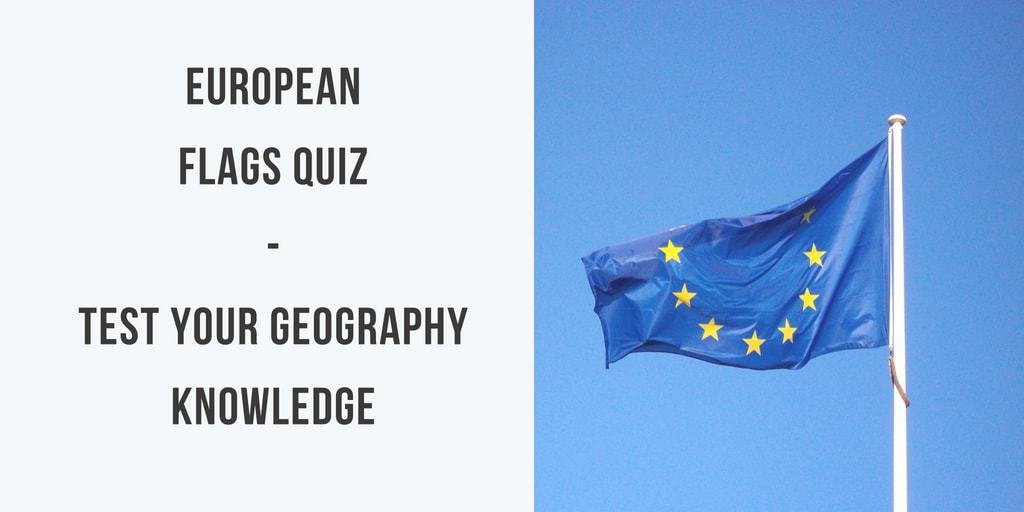
How well do you know the flags of Europe? Take our European flags quiz and test your geography knowledge! For every answer, we will reward you with a short fun fact about a European country. Did you know which European country invented gin? Or what the tooth fairy is called in Spain?
Your total score will be shown at the end after you’ve answered all 10 questions.
European Flags Quiz
European flags quiz question 1.
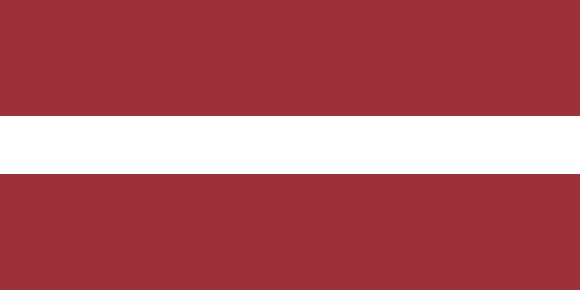
This is the flag of Latvia
Here is a fun fact about Latvia: Latvian's can have their names changed for €70 - cheaper than a name change on most flight tickets.
European Flags Quiz Question 2
This is the national flag of moldova.
Moldova is the poorest country in Europe and still it has got some of the best internet speed in the world. Moldova scored the 3rd position in the world internet speed ranking. Moldova is also a very cheap country and traveling there is extremely rewarding. Read here about our experiences traveling to Chisinau, the capital of Moldova.
European Flags Quiz Question 3

This is the flag of Spain!
You really deserved this fun fact: Spaniards don't believe in a tooth fairy. Instead, they have a tooth mouse that goes by the name of Ratoncito Perez.
Want to explore more about Spain? We have articles about Seville , Barcelona and Bilbao .
European Flags Quiz Question 4
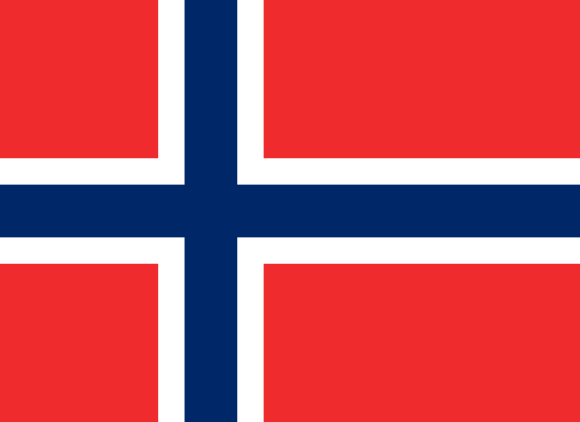
This is the flag of Norway
And here is a fun fact to go with it: The capital of Ireland, Dublin, was founded by the Norwegians in A.D 836
European Flags Quiz Question 5
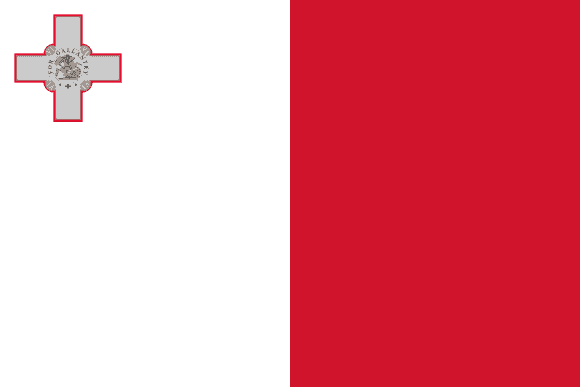
This is the flag of Malta
Did you know that Brian Adams and Britney Spears are of Maltese descent?
European Flags Quiz Question 6
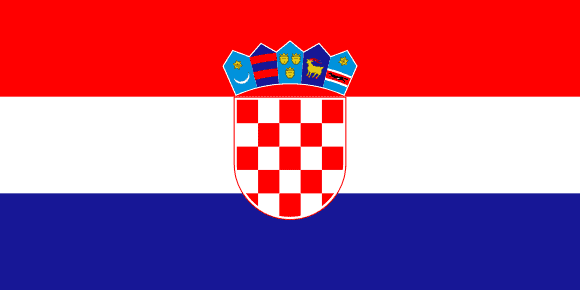
This is the flag of Croatia
Large part of season 2 and 3 of Game of Thrones was shot in the beautiful city of Dubrovnik on the Croatian Mediterranean coast. So you may be more familiar with Croatia than you think. Planning a trip to Croatia? Check out this guide for the perfect itinerary!
European Flags Quiz Question 7

This is the flag of San Marino
San Marino is a small country located within Italy. If every national of San Marino was to visit the Wembley soccer stadium in London, there would still be over 56,000 empty seats.
European Flags Quiz Question 8
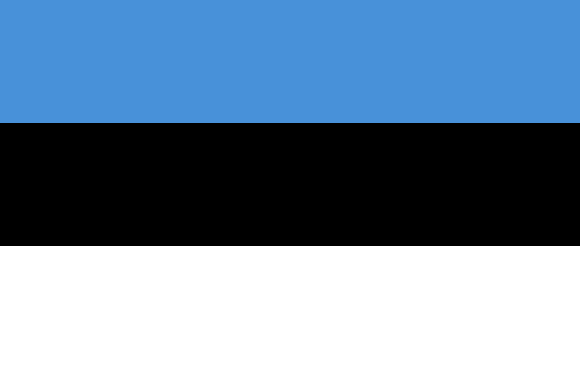
This is the flag of Estonia
A sport called " Wife-carrying " is hugely popular in Estonia and Finland. It is basically a race of men who a carrying a female on their shoulders.
European Flags Quiz Question 9
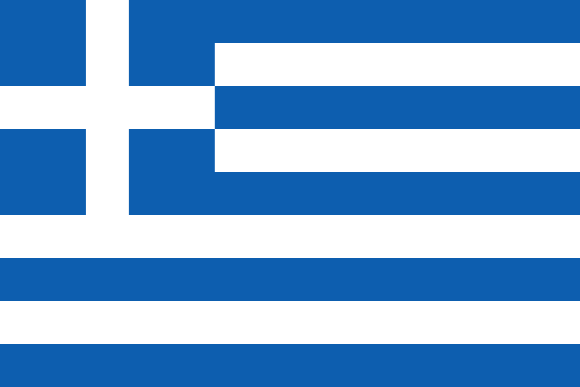
This is the flag of Greece
According to a Durex global survey, Greece is the most sexually active nation. Coincidentally, Greece also has the highest rate of smokers in Europe...
European Flags Quiz Question 10
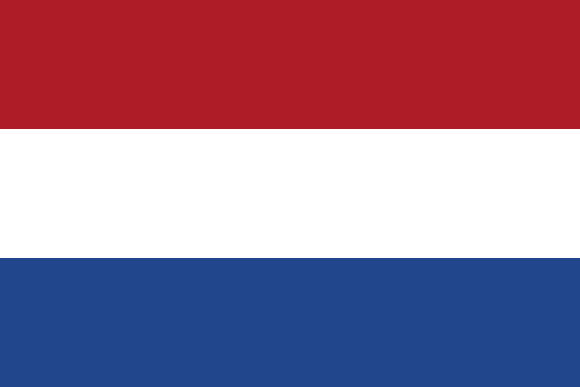

This is the flag of the Netherlands
Even though gin is generally considered a British "thing", it was actually invented in the Netherlands.
Share results:
Share story to unlock your results, want more stuff like this, how many correct answers did you score in our european flags quiz.
Let us know in the comment section. Also make sure to share your results with your friends on Facebook by clicking the sharing buttons above. Did you think our EU quiz was too easy? Or are you a real geography expert and you easily know all country flags? Then take our hard flag quiz .
If you like our trivia games, you should also check out our other fun quizzes:
Asia Flag Quiz
World Landmarks Quiz
All flags of the world quiz
And there will be many more soon. Make sure to follow us on Facebook or Twitter to stay updated when we publish a new fun geography quiz.
Like the quiz? Pin it:
8 thoughts on “ European Flags Quiz – Test Your Knowledge ”
Scored 5. I need to go back to geography class haha. Love your quizzes!
Aaaargh, only 8, what a shame for a proud European like me 😀
Leave a Reply Cancel reply
Your email address will not be published. Required fields are marked *
HIGHLIGHTS FROM CENTRAL EUROPE AND THE 3 SEAS INITIATIVE
Central european flags.
Ever wondered who came up with the colors and patterns on national flags? Is there even any purpose to them? Well, not just a purpose but a whole lot of history. Let us tell you about the flags of the Three Seas States.

Calling the Three Seas States Eastern European countries is an oversimplification. Perhaps it would be more precise to say they are located in Central and Eastern Europe. The Three Seas functions as an entity comprising separate nations whose histories are often intertwined and sometimes complicated and loaded with sensitive matters. Its countries proudly and eagerly share their heritage, rediscovering what they share rather than focusing on divisions.
Three Seas Initiative comprises 12 countries: Austria, Bulgaria, Croatia , Czechia, Estonia, Hungary, Latvia, Lithuania, Poland, Romania, Slovakia , and Slovenia . Some of the states regained their independence earlier than others. A flag and coat of arms have for centuries worked like a logo – an icon encapsulating the roots of a nation. What do central and Eastern European flags tell us?
The current flag was adopted in 1945, after the end of the Second World War. It is said to be one of the oldest flags still in contemporary use, representing the nation rather than the sovereign from the start. The colors represent strength and bravery (red), peace and honesty (white). The flag sometimes is presented with an eagle (in the past, a two-headed eagle). It symbolizes Austria’s sovereignty.
The crown on its head refers to the people of the middle class and pays tribute to their efforts in building the country. The eagle is holding a sickle (symbolic of the significant role agriculture has played in Austria’s history) and a hammer (referring to the industry and the mining history of the country). The broken chain was added to the eagle’s legs in 1945 and represented liberation from the National Socialist Dictatorship.
Until the Ottoman Empire incorporated Bulgaria into its lands, the flag o the country was that of Tsar Ivan Shishman – a white flag with three red lions on a white shield . While the lion is still considered an important symbol of the country, the flag does not resemble the pre-Ottoman version in the least.
It was changed after the Russo-Turkish war when Bulgaria regained its independence (1879). The tri-color flag purposely resembles the Russian tri-color, as it emphasizes the unity of the Slavic nations (pan_Slavic colors) and the ethnic origins of Bulgarians.
Apart from that universal message, the colors used are not coincidental and have their meaning. Starting from the top: the white stands for freedom, peace, and love. The green refers to the pivotal role of agriculture in the country’s history. And the red symbolizes independence, struggle, and courage, especially in battle.
Although Croatia’s route to independence was incredibly long and lasted for more than three centuries, the nation chose its colors to unite under despite the state did not exist in official terms. The red, white, and blue stripes correspond with the colors chosen by former, ancient realms – predecessors of today’s Croatia. The Kingdom of Croatia was united under the colors of white and red; the Kingdom of Slavonia used white and blue, while Dalmatia chose blue and yellow.
Out of these four colors – three common ones were chosen. In the center, you can see the Croatian coat of arms with a crown of five shields. The shields depict (from the left) the oldest known coat of arms of Croatia, the coat of arms of the Ragusa Republic , the coat of arms of Dalmatia, the coat of arms of Istria, and the coat of arms of Slavonia. The flag was officially adopted in December 1990, shortly before the Croatian War of Independence.
Czech Republic (Czechia)
The basis for contemporary Czechia’s flag can be found in the ancient Kingdom of Bohemia. Upon the formation of Czechoslovakia in 1918, the government decided that its flag would draw from the roots of the Bohemian flag. However, it would incorporate a blue triangle (apart from its symbolism, it was also very practical as it distinguished it from the flag of Poland).
The white stands for the virtues of peace and honesty, while the red corresponds with strength and courage (especially in battle). The blue triangle stands for justice, truth, and loyalty. After the fall of Czechoslovakia, Czechia briefly entertained the thought of changing its national flag. However, in the end, the decision was to keep the current flag to remind future generations about their nation’s history.
The symbolism of the Estonian flag is a little different from the symbolism we have seen in the previous flags , where the colors draw their meaning from heraldry. Estonia’s flag was thought up in 1881 by a fraternity at the University of Tartu . It was soon adopted by the Estonian national movement to become its official symbol after the First World War and after gaining independence. Starting from the top, the blue represents the sky over the nation, the freedoms it enjoyed, and the sea on its borders.
The black stripe corresponds with the land and independence taken from the Estonian nation for so long. The bottom white stripe speaks of hope for the future and of work that needs to be done to turn those hopes into reality. Those with more romantic souls will also point out that the blue, black, and white are strikingly similar to the winter landscape in Estonia, with its blue skies, black, bare forests, and deep snow.
The flag of Hungary has its roots in the Middle Ages. At first, the flag displayed only white and red, originating from the Arpad Dynasty. After Hungary adopted the Christian faith, Stephen I added the green color, creating the basis for all variations present in history from that point on. The flag’s symbolism is most commonly referred to in the romantic interpretation , where the red color symbolizes the blood spilled in many wars for the country; white stands for many rivers which flow through the land; and green symbolizes the Hungarian mountains.
However, especially if we bear in mind the longstanding history of the Hungarian flag, we should also consider the alternative version relating to the symbolism used in heraldry. In that case, the red stands for the nation’s strength and courage, the white emphasizes the nation’s faithfulness and faith, and the green speaks of the nation’s hope for the future or sometimes is interpreted as the symbol of plentifulness of the land.
Not many people know that Latvia’s flag is one of the oldest European flags. It was first recorded to be used by the Latvian troops in a battle in 1279. The flag is a carmine sheet divided in the middle by a white stripe. The legend connected with the flag says that the Latvians (in some sources, the Latvian king), when battling for the lands and wounded, were sent back wrapped in a white sheet that would soak with blood everywhere but under their spines.
In terms of heraldry, the red does refer to courage and strength in battle. The white symbolizes the virtues of truth, lawfulness, and freedom. In more modern times, the flag in its current shape was resurrected from ancient sources by Ansis Cirulus, an artist credited with the design of the Latvian flag.
The case with the flag of Lithuania is, indeed, an interesting one. Historically, the red flag depicted a white knight charging on a horse (known as Vytis in Lithuanian and Pogoń in Polish) in its center. This flag is associated with Gediminas despite the lack of sufficient historical evidence to prove it . However, historical sources clearly describe its usage during battles with the order of the Teutonic Knights, including the famous battle in the fields of Grunwald in 1410.
After the First World War, partly because the original flag was impractical to use internationally, and partly as Lithuanias wanted to make a clear statement and got its history detached from Poland (the colors in Lithinaunia’s coat of arms are white and red as the Polish flag) Lithuanians started to look for a new symbol. Drawing on their folk outfits, they came up with a flag that, in its symbolism, does not follow the rules of heraldry. In the new (1918) Lithuania flag, yellow represents the sun, light, and prosperity.
The next color, green, symbolizes the beauty of nature, freedom, and hope. The only color which seems to take some meaning from the heraldry is red, corresponding with the courage and blood sacrificed by Lithuanians for their homeland, and symbolizes the land. But once in a while, the discussion of whether the original flag should be reinstituted emerges, so stay tuned.
Although Polish national colors have been in use for centuries (at least from the early 10 th century), it was not until the end of the First World War that the Polish Sejm officially established the form of the Polish national flag. Initially, it would depict a white eagle on a red background. Hence the early form of the Polish flag would use both colors. It was in 1919 when the official Act described the flag as comprising two stripes – white and red.
The white (or, to be precise, silver) symbolizes the eagle and the virtues of purity, loyalty, humility, and nobility. The red corresponded with courage and strength, especially in battle, as well as zeal and sacrifice. It also was the most expensive dye in the early centuries. Hence it was symbolic of royalty.
Interestingly, Poland has two official versions of its national flag . The other is also adorned with Poland’s coat of arms. However, its use is restricted to diplomatic missions, merchant ships, airports, and consulates. What else you should know about flags of Eastern Europe ?
The flag of Romania is the only one in this set comprising horizontal rather than vertical stripes. Originating from the colors used by the Romanian nobles, it was first described, and its symbolic meaning explained, in 1821. Starting from the left, the blue stripe is said to represent liberty; the yellow stripe stands for justice, while the red refers to fraternity.
Hard to stop yourself from making a connection with the French flag and French Revolution. However, such an association has no historical grounds, just as the theory of it being a hybrid of the flags of Moldavia and Wallachia.
The colors of Slovakia’s flag are those described during the 1848 Revolutions and known as the pan-Slavic colors. They are used by many Slavic countries and can be especially seen in the flags of the nations that regained independence at some point post the turbulent 1848. The idea behind the pan-Slavic colors was to emphasize the Slavic roots of the Central and Eastern European countries and Russia.
The contemporary Slovakia flag comprises three horizontal lines: white, red, and blue. Their meaning is derived from medieval heraldry, where white stands for purity and truth, red reminds of courage and strength (especially in battle), and blue refers to loyalty and faithfulness. Bearing to the left on the flag, we can see Slovakia’s coat of arms – a cross with two arms, rising over a blue hill and presented on a red background. It speaks of the nation’s heritage and strong connection to the Orthodox religion, which was prevalent in the lands.
There are two sources where we can search for the roots of Slovenia’s flag. The first one is connected with the 1848 Revolutions and the pan-Slavic colors established at the Slavic Congress, held that year in Prague. But there are older sources connecting Slovenia to the white, red, and blue. The land of Carniola, which was under the Roman Empire, was granted a coat of arms by the Emperor. The coat of arms featured a white shield, a blue eagle, and a red-and-white checkered crescent on its breast.
The symbolic nature of the colors follows suit with the other Slavic countries, where white stands for purity and truth, red reminds of courage and strength (especially in battle), and blue refers to loyalty and faithfulness. Bearing to the left on the flag, we can see Slovenia’s coat of arms, representing the country’s heritage. The white mountain in the middle is symbolic of Slovenia’s most famous peak – Triglav. The blue, wavy lines at the bottom refer to the waterways which shaped the country’s history. The stars on a blue background were taken from the coat of arms used by the dynasty in Celje – the major dynasty of Slovenia.
It is interesting to realize that most national flags as we know them today may be rooted in the long history of the states but are, in fact, a relatively modern addition to the way countries unite. This change is significant and echoes different winds of history, which have blown into the sails of Europe and, indeed, the entire world.

Weronika Edmunds
Holder of a DPSI in English Law and an MBA, she believes in lifelong learning. Her passion for theatre shaped her sensitivity to the spoken and written word, leading her to become a creative copywriter. She lives for words and knows how to pour life into otherwise lifeless wording. She likes to repeat after M. Ondaatje: “Words, Caravaggio. They have a power.”
Latest from Culture
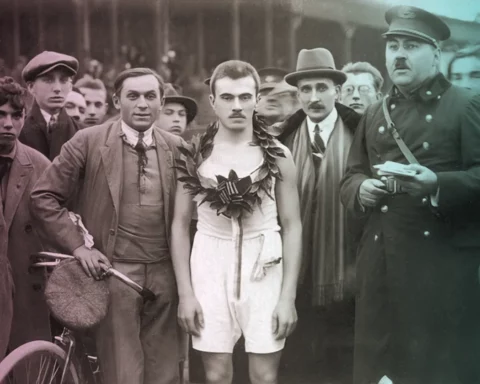
The Košice Peace Marathon – The Oldest in Europe
The annual International Peace Marathon in Košice, known as Košice Marathon, is the oldest in Europe
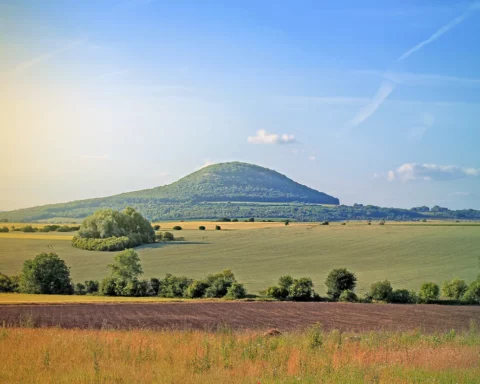
Czechia’s Magic Hill
Říp Mountain rises proudly to the sky in Central Bohemia. In good weather, you can see

Poland’s Real-Life Superman
Behind every superhero, there is an inspiration. One Polish Jew was probably more than that. He
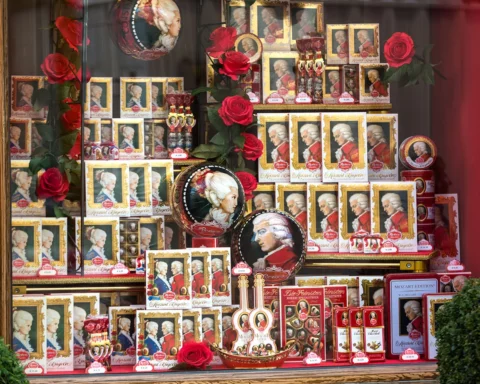
Austria, Home to Mozart and His Kugeln
In honor of one of the world's greatest composers, his homeland's confectioners created Mozartkugeln – spherical
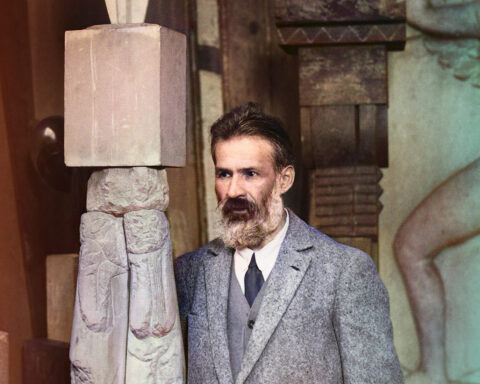
Constantin Brâncuși: The Patriarch of Modern Sculpture
His sculpture La Jeune Fille Sophistiquée is the fifth most expensive sculpture ever sold. His work
- AI Generator
8,480 Europe Flag Map Stock Photos & High-Res Pictures
Browse 8,480 europe flag map photos and images available, or start a new search to explore more photos and images..

- Images home
- Editorial home
- Editorial video
- Premium collections
- Entertainment
- Premium images
- AI generated images
- Curated collections
- Animals/Wildlife
- Backgrounds/Textures
- Beauty/Fashion
- Buildings/Landmarks
- Business/Finance
- Celebrities
- Food and Drink
- Healthcare/Medical
- Illustrations/Clip-Art
- Miscellaneous
- Parks/Outdoor
- Signs/Symbols
- Sports/Recreation
- Transportation
- All categories
- Shutterstock Select
- Shutterstock Elements
- Health Care
Browse Content
- Sound effects
PremiumBeat
- PixelSquid 3D objects
- Templates Home
- Instagram all
- Highlight covers
- Facebook all
- Carousel ads
- Cover photos
- Event covers
- Youtube all
- Channel Art
- Etsy big banner
- Etsy mini banner
- Etsy shop icon
- Pinterest all
- Pinterest pins
- Twitter All
- Twitter Banner
- Infographics
- Zoom backgrounds
- Announcements
- Certificates
- Gift Certificates
- Real Estate Flyer
- Travel Brochures
- Anniversary
- Baby Shower
- Mother's Day
- Thanksgiving
- All Invitations
- Party invitations
- Wedding invitations
- Book Covers
- About Creative Flow
- Start a design
AI image generator
- Photo editor
- Background remover
- Collage maker
- Resize image
- Color palettes
Color palette generator
- Image converter
- Creative AI
- Design tips
- Custom plans
- Request quote
- Shutterstock Studios
0 Credits Available
You currently have 0 credits
See all plans

Image plans
With access to 400M+ photos, vectors, illustrations, and more. Includes AI generated images!

Video plans
A library of 28 million high quality video clips. Choose between packs and subscription.

Music plans
Download tracks one at a time, or get a subscription with unlimited downloads.
Editorial plans
Instant access to over 50 million images and videos for news, sports, and entertainment.
Includes templates, design tools, AI-powered recommendations, and much more.
Search by image
Europe Travel Banner royalty-free images
328,918 europe travel banner stock photos, vectors, and illustrations are available royalty-free for download..

Our company
Press/Media
Investor relations
Shutterstock Blog
Popular searches
Stock Photos and Videos
Stock photos
Stock videos
Stock vectors
Editorial images
Featured photo collections
Sell your content
Affiliate/Reseller
International reseller
Live assignments
Rights and clearance
Website Terms of Use
Terms of Service
Privacy policy
Modern Slavery Statement
Cookie Preferences
Shutterstock.AI
AI style types
Shutterstock mobile app
Android app
© 2003-2024 Shutterstock, Inc.
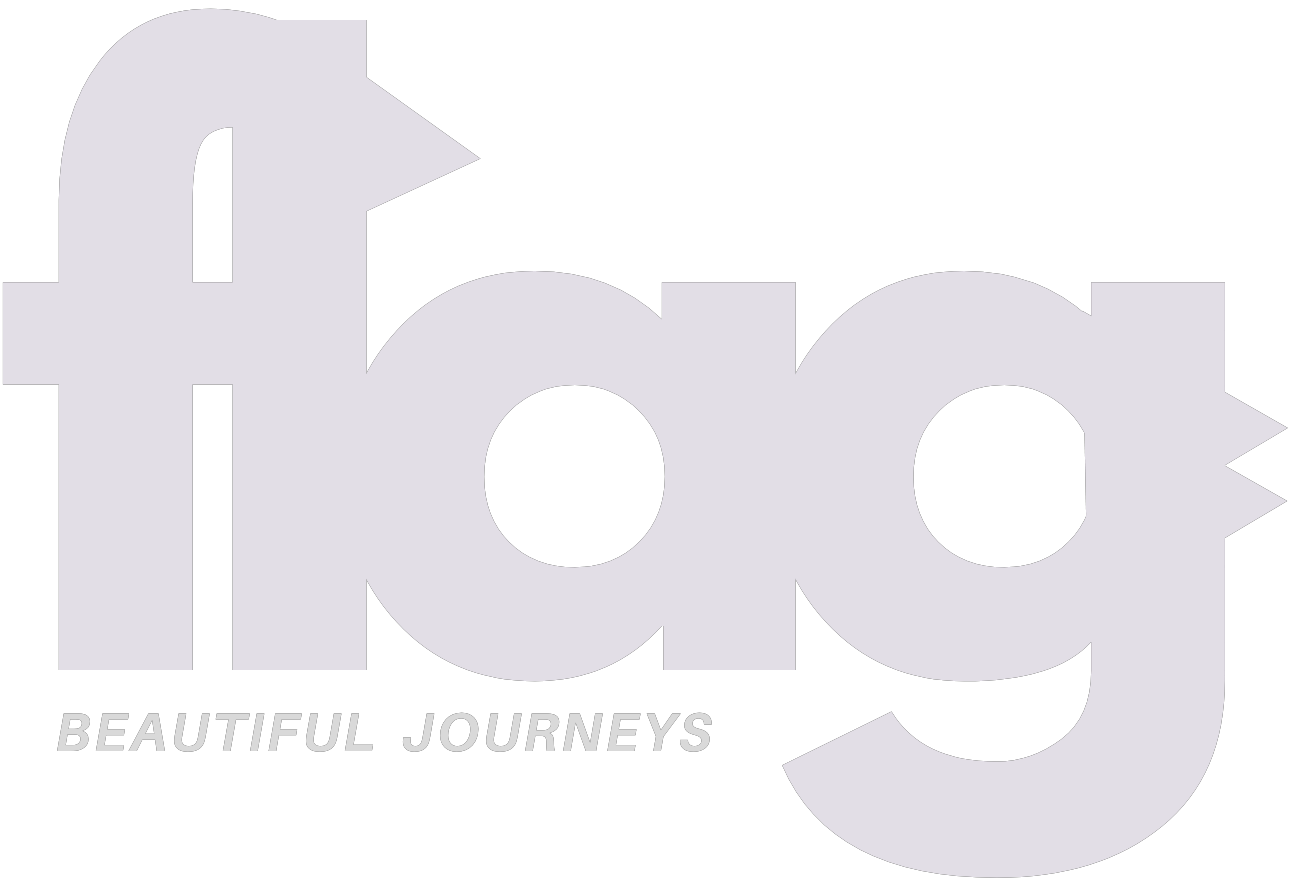
France: Time to Come Back
Spain is always a good idea, greece: i have a dream, italy is about us, charming andalucia, wine countries.
Chef-Curated Culinary Journeys to the REAL places
What means Belpaese?
Beautiful france.

Dream, Travel, Repeat.

Find your Journey
Discover Our Destinations
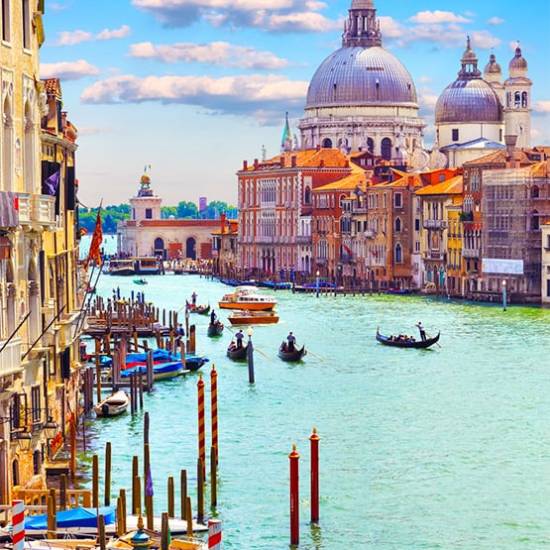
Exploring an Unforgettable World

Our Journeys

Sustainability

Local Experiences

Food and Wine

18 tour packages
Visit Italy
Lorem ipsum dolor sit amet, consectetur adipisicing elit. Alias assumenda aut deleniti distinctio dolorum, error et impedit iste iure laboriosam libero maiores nam nisi non omnis quia, sed unde voluptate.
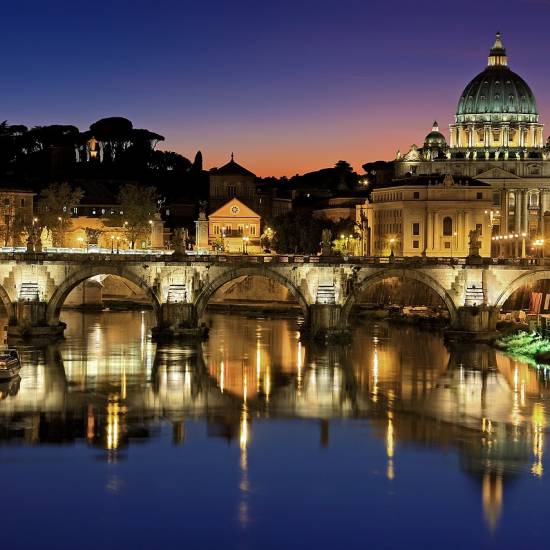
Absolute Italy 2024
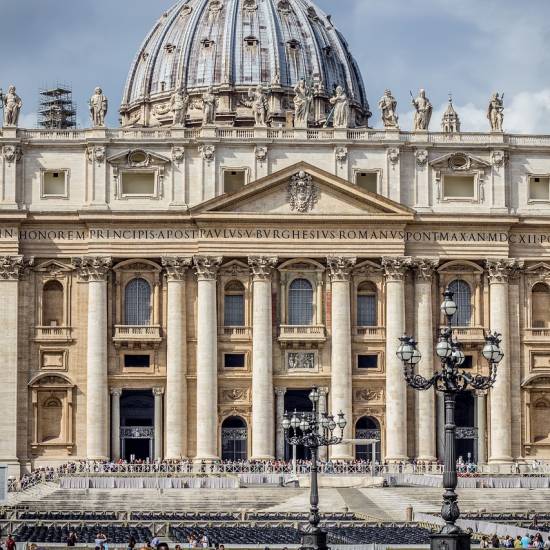
Italy By High Speed Train
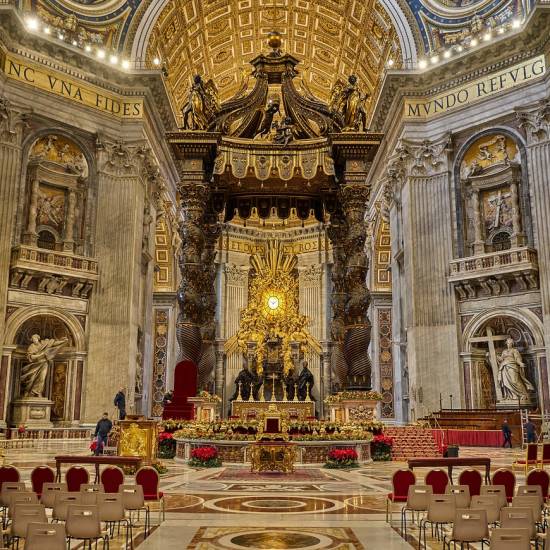
“Eco-Comfort” Tour Of Italy By Train
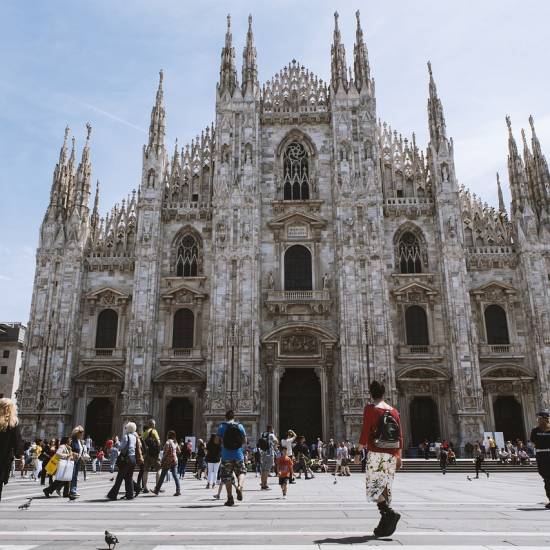
The Best Of Italy By train
4 tour packages
Visit Portugal
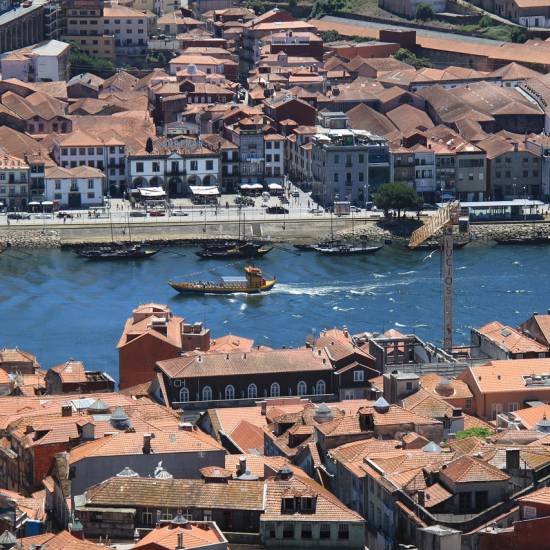
Discovering The Best Of Portugal
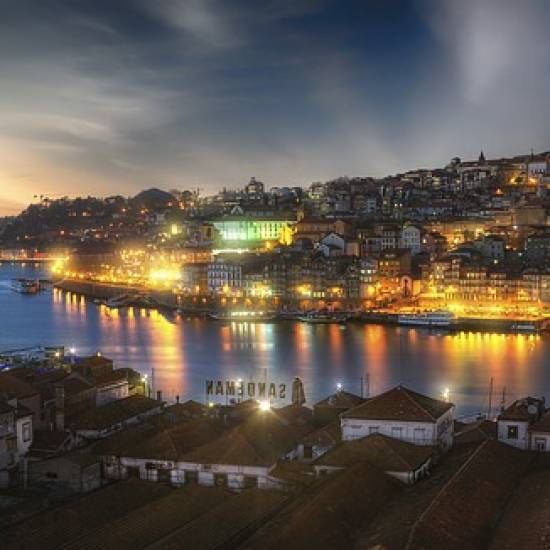
Wonders Of North Portugal
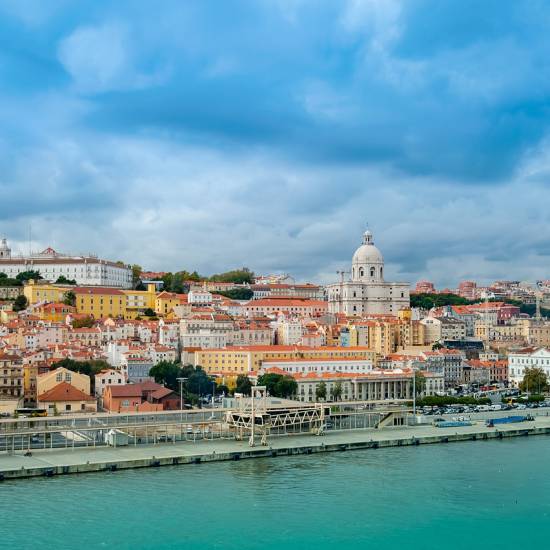
Wonders Of South Portugal
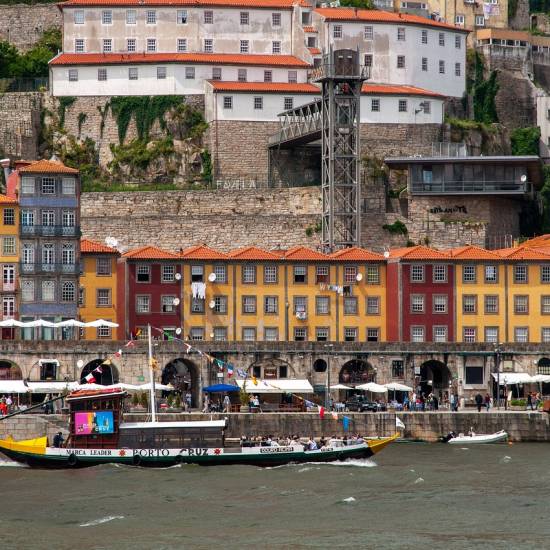
Portugal By High Speed Train
2 tour packages
Visit England
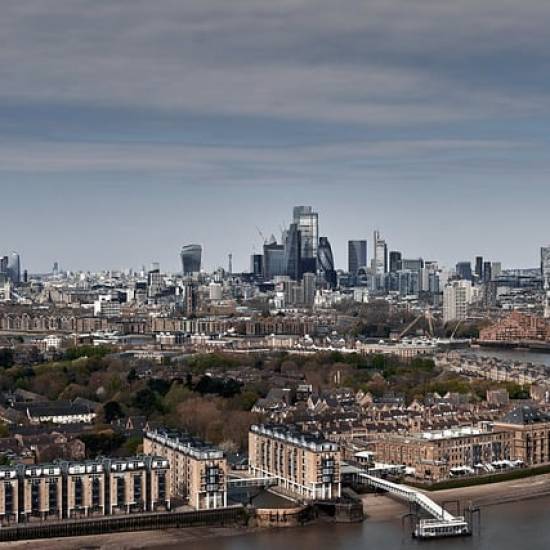
Exploring The Wonders Of Britain By Train
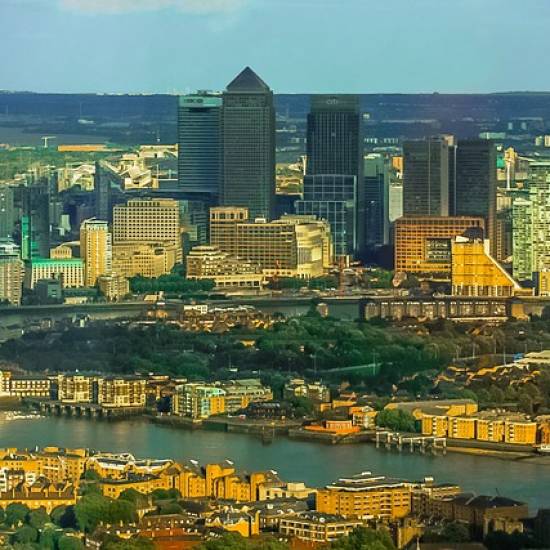
Best Of Great Britain
1 tour packages
Visit France
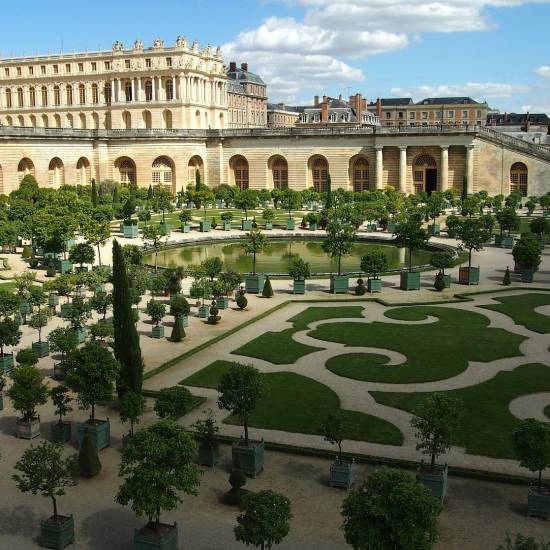
Paris & Provence
Letters from Europe
Read what our team have written for you
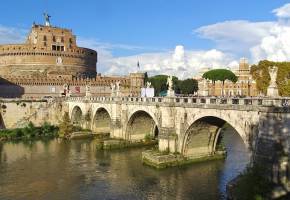
A few tips from us if you are heading to Rome
Whether it is your first or fifth visit to the Eternal City, there is always something new to discover. With an almost overwhelming amount of art, his...
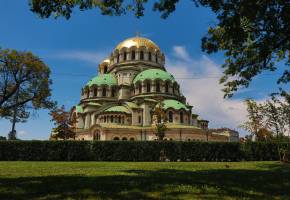
A weekend in Sofia: things to see and do
The capital of Bulgaria is a modern, vibrant city with bags of history and lots to explore. It lies at the foot of Mount Vitosha, in the western side ...
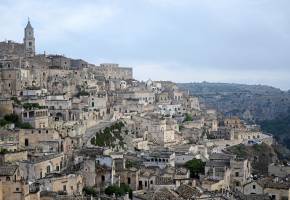
Puglia Next Big Thing: 5 Places tried for you
Puglia is the easternmost region of Italy and it is also known as “the heel” of the Italian boot. The coastline stretches out for 800 km t...
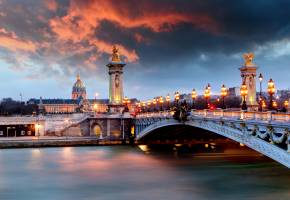
11 great museums to visit in Paris
Paris enchants visitors with its amazing artistic and cultural scene, ranging from world-famous art institutions to niche galleries. But with over 190...
What we know about the container ship that crashed into the Baltimore bridge
- The ship that crashed into the Francis Scott Key Bridge on Tuesday was the Singapore-flagged Dali.
- The container ship had been chartered by Maersk, the Danish shipping company.
- Two people were recovered from the water but six remain missing, authorities said.

A container ship crashed into a major bridge in Baltimore early Tuesday, causing its collapse into the Patapsco River.
A livestream showed vehicles traveling on the Francis Scott Key Bridge just moments before the impact at 1:28 a.m. ET.
Baltimore first responders called the situation a "developing mass casualty event" and a "dire emergency," per The Associated Press.
James Wallace, chief of the Baltimore Fire Department, said in a press conference that two people had been recovered from the water.
One was uninjured, but the other was transported to a local trauma center in a "very serious condition."
Wallace said up to 20 people were thought to have fallen into the river and some six people were still missing.
Richard Worley, Baltimore's police chief, said there was "no indication" the collision was purposeful or an act of terrorism.
Wes Moore, the governor of Maryland, declared a state of emergency around 6 a.m. ET. He said his office was in close communication with Pete Buttigieg, the transportation secretary.
"We are working with an interagency team to quickly deploy federal resources from the Biden Administration," Moore added.
Understanding why the bridge collapsed could have implications for safety, in both the shipping and civil engineering sectors.
The container ship is the Singapore-flagged Dali, which is about 984 feet long, and 157 feet wide, per a listing on VesselFinder.
An unclassified Cybersecurity and Infrastructure Security Agency report said that the ship "lost propulsion" as it was leaving port, ABC News reported.
The crew notified officials that they had lost control and warned of a possible collision, the report said, per the outlet.
The Dali's owner is listed as Grace Ocean, a Singapore-based firm, and its manager is listed as Synergy Marine, which is also headquartered in Singapore.
Shipping news outlet TradeWinds reported that Grace Ocean confirmed the Dali was involved in the collapse, but is still determining what caused the crash.
Related stories
Staff for Grace Ocean declined to comment on the collision when contacted by Business Insider.
"All crew members, including the two pilots have been accounted for and there are no reports of any injuries. There has also been no pollution," Synergy Marine said in a statement.
The company did not respond to a request for further comment from BI.
'Horrified'
Maersk chartered the Dali, with a schedule for the ship on its website.
"We are horrified by what has happened in Baltimore, and our thoughts are with all of those affected," the Danish shipping company said in a statement.
Maersk added: "We are closely following the investigations conducted by authorities and Synergy, and we will do our utmost to keep our customers informed."
Per ship tracking data, the Dali left Baltimore on its way to Colombo, the capital of Sri Lanka, at around 1 a.m., about half an hour before the crash.
The Port of Baltimore is thought to be the largest in the US for roll-on/roll-off ships carrying trucks and trailers.
Barbara Rossi, associate professor of engineering science at the University of Oxford, told BI the force of the impact on one of the bridge's supporting structures "must have been immense" to lead to the collapse.
Dr Salvatore Mercogliano, a shipping analyst and maritime historian at Campbell University, told BI: "It appears Dali left the channel while outbound. She would have been under the control of the ship's master with a Chesapeake Bay pilot onboard to advise the master.
"The deviation out of the channel is probably due to a mechanical issue as the ship had just departed the port, but you cannot rule out human error as that was the cause of the Ever Forward in 2022 just outside of Baltimore."
He was referring to the incident two years ago when the container ship became grounded for a month in Chesapeake Bay after loading up cargo at the Port of Baltimore.
The US Coast Guard found the incident was caused by pilot error, cellphone use, and "inadequate bridge resource management."
Claudia Norrgren, from the maritime research firm Veson Nautical, told BI: "The industry bodies who are here to protect against incidents like this, such as the vessel's flag state, classification society, and regulatory bodies, will step in and conduct a formal investigation into the incident. Until then, it'll be very hard for anyone to truly know what happened on board."
This may not have been the first time the Dali hit a structure.
In 2016, maritime blogs such as Shipwreck Log and ship-tracking site VesselFinder posted videos of what appears to be the stern of the same, blue-hulled container vessel scraping against a quay in Antwerp.
A representative for the Port of Antwerp told BI the Dali did collide with a quay there eight years ago but couldn't "give any information about the cause of the accident."
The Dali is listed as being built in 2015 by Hyundai Heavy Industries in South Korea.
Watch: The shipwreck at the center of a battle between China and the Philippines
- Main content
Baltimore bridge collapse: What happened and what is the death toll?
What is the death toll so far, when did the baltimore bridge collapse, why did the bridge collapse, who will pay for the damage and how much will the bridge cost.

HOW LONG WILL IT TAKE TO REBUILD THE BRIDGE?
What ship hit the baltimore bridge, what do we know about the bridge that collapsed.

HOW WILL THE BRIDGE COLLAPSE IMPACT THE BALTIMORE PORT?

Get weekly news and analysis on the U.S. elections and how it matters to the world with the newsletter On the Campaign Trail. Sign up here.
Writing by Lisa Shumaker; Editing by Daniel Wallis and Bill Berkrot
Our Standards: The Thomson Reuters Trust Principles. , opens new tab

Thomson Reuters
Lisa's journalism career spans two decades, and she currently serves as the Americas Day Editor for the Global News Desk. She played a pivotal role in tracking the COVID pandemic and leading initiatives in speed, headline writing and multimedia. She has worked closely with the finance and company news teams on major stories, such as the departures of Twitter CEO Jack Dorsey and Amazon’s Jeff Bezos and significant developments at Apple, Alphabet, Facebook and Tesla. Her dedication and hard work have been recognized with the 2010 Desk Editor of the Year award and a Journalist of the Year nomination in 2020. Lisa is passionate about visual and long-form storytelling. She holds a degree in both psychology and journalism from Penn State University.
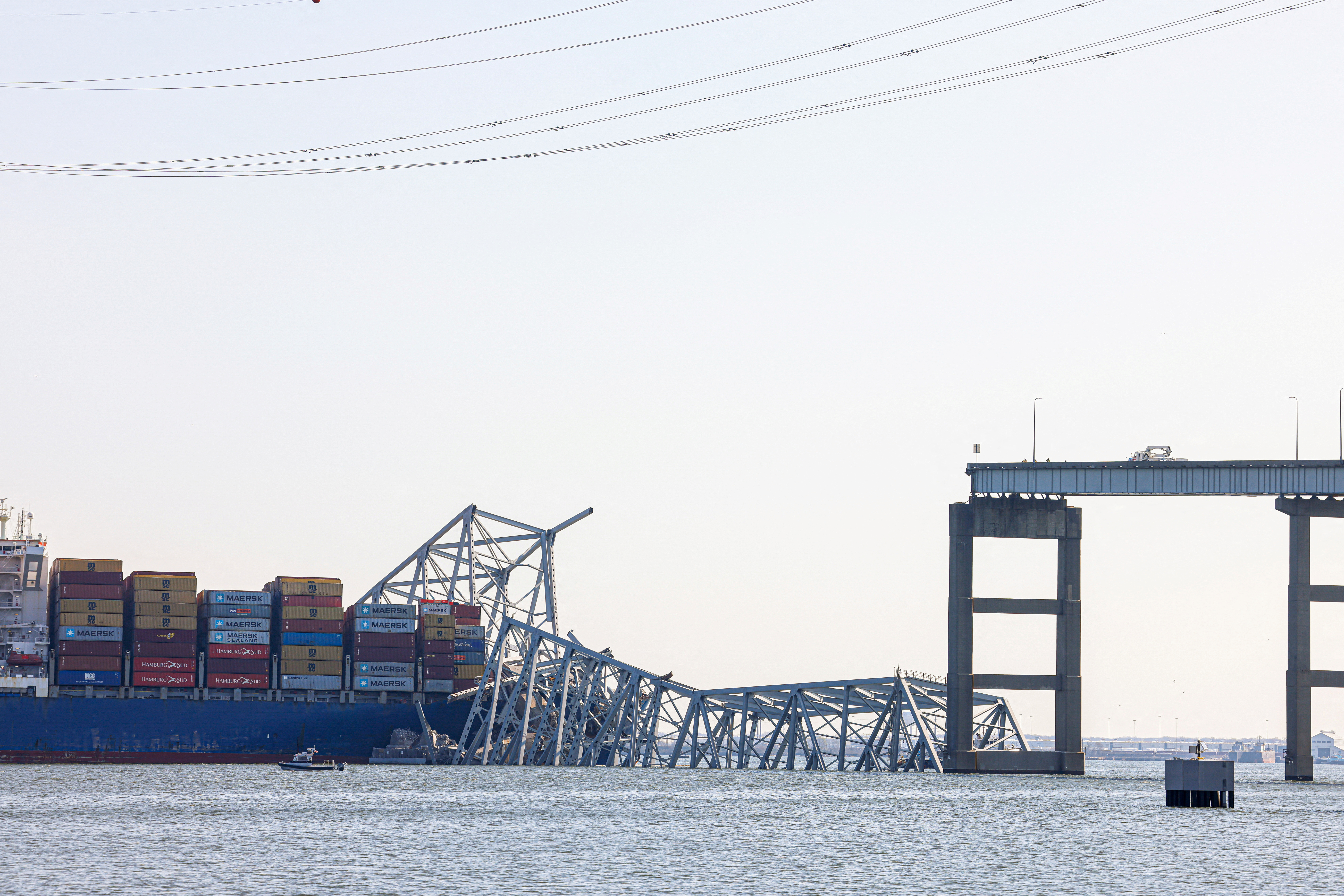
Philippines boosts maritime security as China tension rises
Philippine President Ferdinand Marcos Jr has ordered his government to strengthen its coordination on maritime security to confront "a range of serious challenges" to territorial integrity and peace, as a dispute with China escalates.
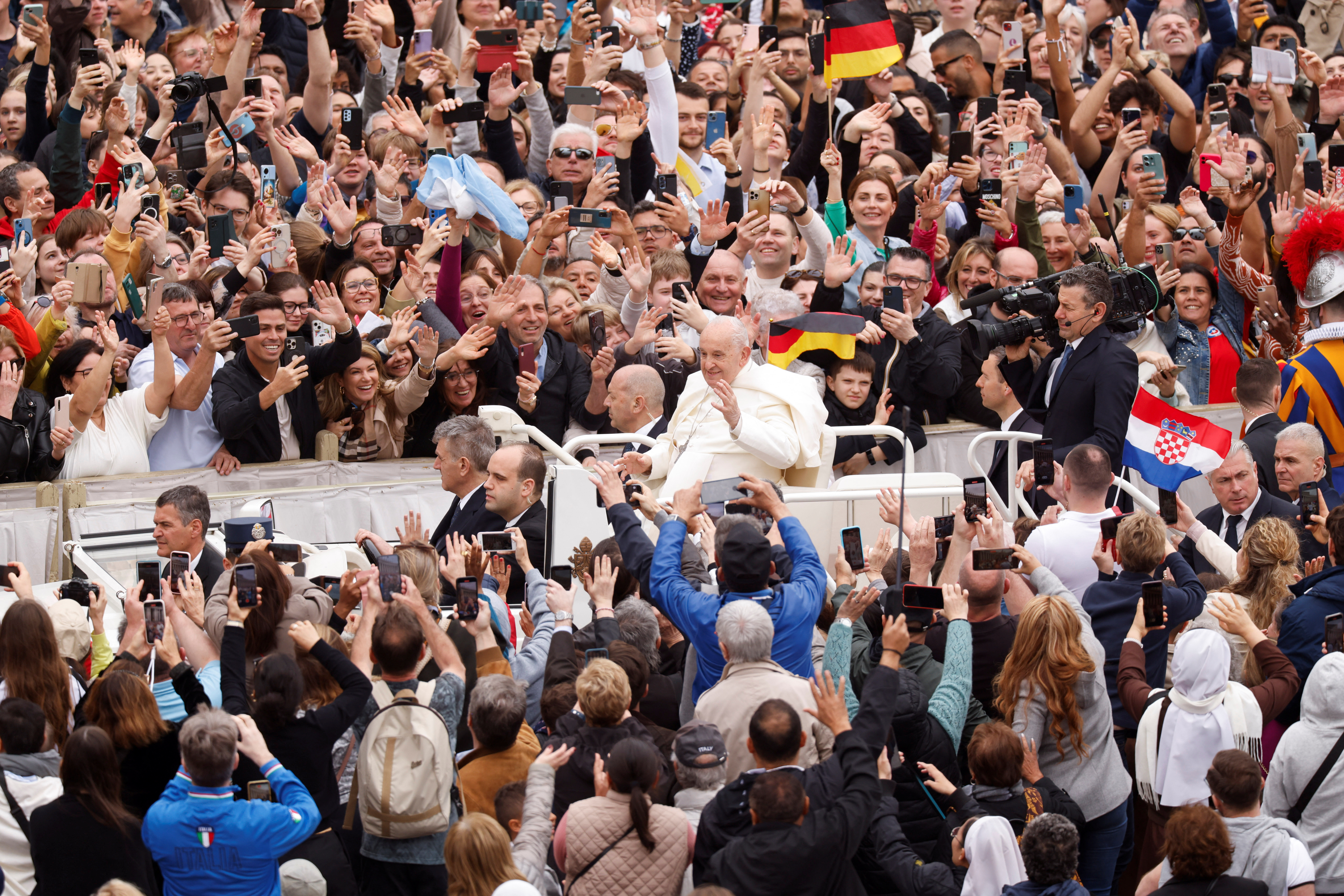

FinanceBuzz
12 Types of People Who Should Never Travel to Europe
Posted: March 10, 2024 | Last updated: March 11, 2024

You’ve finally reached a point where you’re ready to start traveling more . “Where should I start?” is a great question to ask yourself.
Plenty of fellow globetrotters might recommend Europe. The continent is definitely a top travel destination (after all, Paris was the world’s most-visited city in 2022). But just because something is popular doesn’t mean it’s the right choice for you. So, if any of the following descriptors apply to you, we recommend skipping Europe entirely.
Earn Points and Miles: Find the best travel credit card for nearly free travel
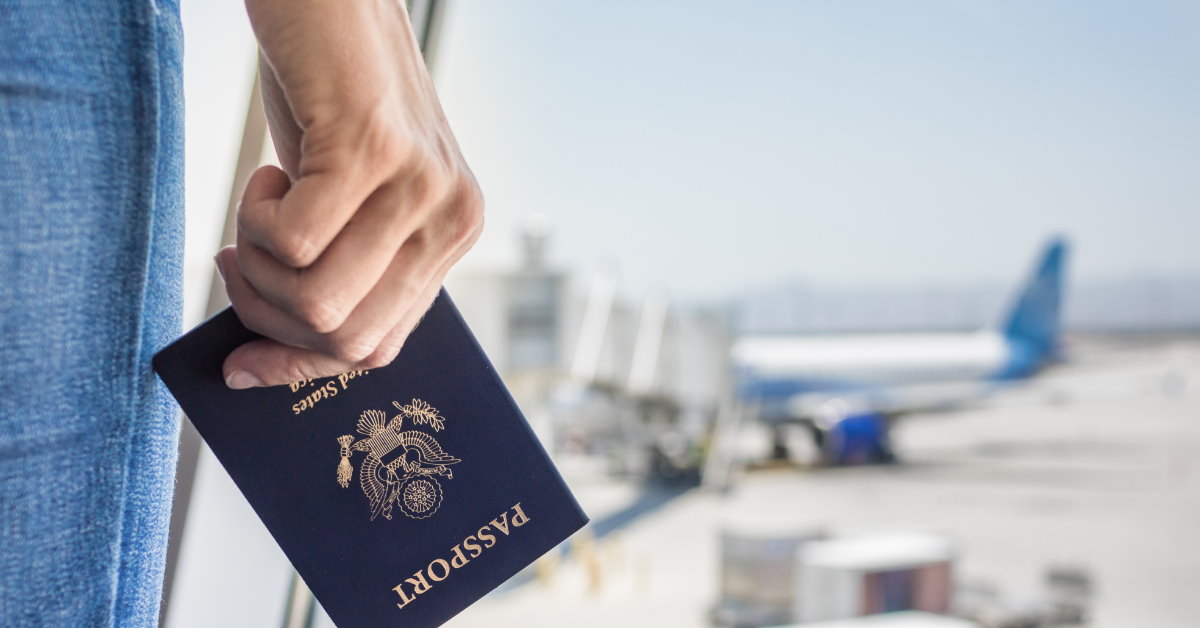
People who don’t want to deal with the hassle of passport renewal
If you have difficulty keeping up with paperwork and tend to miss crucial deadlines, international travel might not be for you.
Having your travel documents in order is crucial when planning to travel internationally. Passport processing takes seven to ten weeks, not including the time your passport spends in the mail.
Are you a homeowner? Don't let unexpected home repairs drain your bank account.

People who haven't saved up
You could travel to Europe on a budget, staying in hostels and using a top travel credit card to travel for almost free .
But no matter how many excess costs you cut out, a trip to Europe is inherently expensive — if for no other reason than the currency exchange rate and passport or visa fees.

People who don't like jet lag
After your seven-hour flight across the Atlantic, you’ll land in a time zone at least five hours ahead of the one you left.
For every one to one-and-a-half hours you leap ahead in time, your body requires about a day to adjust. You won’t feel quite like yourself again until five days into your European vacation.
And you can expect to take at least five days to recover once you’re back home, too.
Grow Your $$: 11 brilliant ways to build wealth after 40

People who hate flying
A non-stop flight from New York City to London is six hours and 55 minutes long. If you’re on the West Coast, it's closer to 11 hours (from LA to NYC) — not accounting for layovers or weather delays.
Luckily for the flight-averse, the United States is a remarkably road-trip-friendly country with plenty of beautiful new places you can explore within seven hours (by car) of your home.

People who don’t have much vacation time
If you can actually take a few weeks off, you might have enough to see the best sights Europe has to offer. But if you only get a week or so, a journey across the Atlantic just isn’t worth it.
You’ll have enough time to adjust to the new time zone before you fly home and start readjusting.

People who don’t like walking
If spending a lot of time on your feet isn’t your idea of a good time, save your money by skipping Europe.
Touring the Colosseum, wandering London’s vast Natural History Museum, and exploring the Louvre all demand quite a bit of walking.
Retire Sooner: Take this quiz to see if you can retire early

People who don’t want to spend a fortune on plane tickets alone
Plane ticket prices can vary depending on when you’re flying and how far in advance you manage to snag tickets.
No matter how early you get your tickets, expect to pay quite a bit for a round trip to Europe in this post-pandemic world: In the summer of 2023, the average plane ticket to the continent cost around $1,200.

People who aren't willing to pay more for gas
A trip outside the country can help put domestic gas pump costs into perspective. In Italy, for instance, a gallon costs around $5.96. In France, $5.54. And in the Netherlands, $6.48.
And that’s after gas prices stabilized, as they doubled during summer, coming to an all-time high. Needless to say, if you were planning on a Euro road trip, it could cost you a pretty penny.
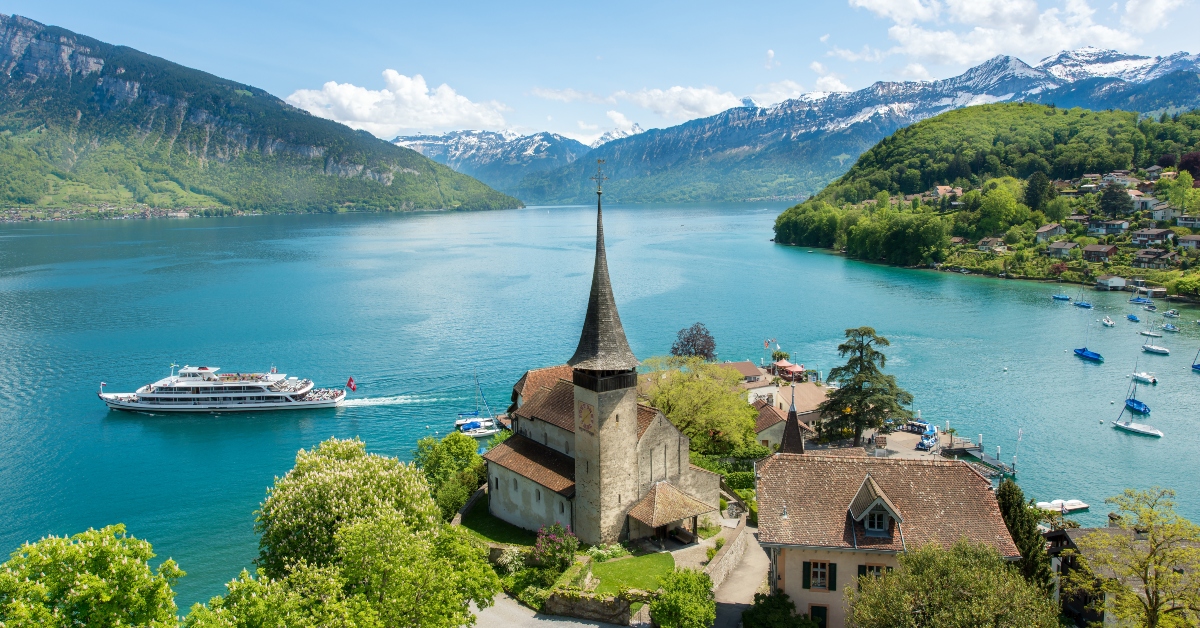
People who aren't huge history fans
Europe’s cities are much older than America’s. Some by a thousand years or more. For instance, the Bulgarian city of Plovdiv has been continuously inhabited for around eight millennia!
While you can certainly find modern activities in any European city, your overall experience might be more interesting if you're passionate about the past.
9 nearly secret things to do if you fly Southwest

People who hate public transit
Because Europe is both old and densely populated, most cities have robust public transit systems.
Sure, as long as you don’t mind the high petrol prices, you can get around many European cities by car.
While you can save a lot of time and money, navigating subways, buses, and trains has a high learning curve, especially for visitors who don’t speak a country’s native language.

People who aren’t multi-lingual
Many Europeans speak English, so even if you don’t speak a second language, you can likely manage in many metropolitan areas in Europe.
However, you shouldn’t count on those around you speaking the same language as you.
And even if you’re surrounded by English speakers, it can be frustrating to constantly ask for translations for menu items or street signs.
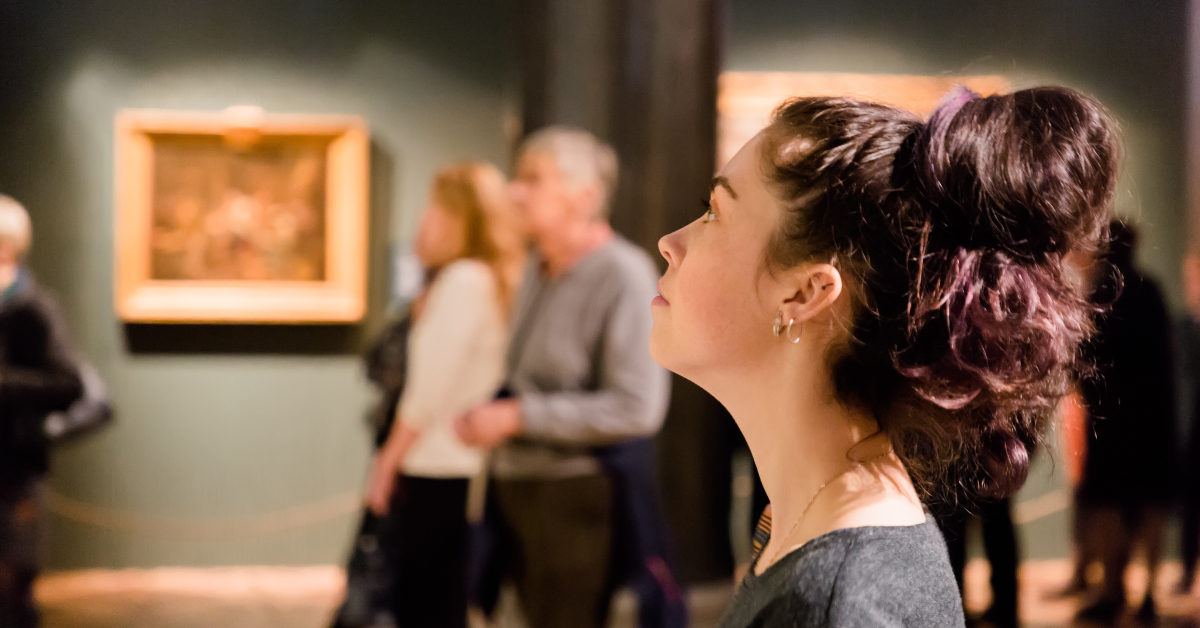
People who aren't interested in museums
For many people, Europe’s biggest draw is its museums. The Louvre alone has 652,300 square feet to explore, which can take up to 65 days!
You can avoid wasting money by taking a trip closer to home. Spend half a day at a famous museum like Seattle’s Pop Culture Museum or New York’s Museum of Modern Art and devote the rest of your trip to other activities. Or, if you prefer a more active, outdoorsy vacation, a national park or a mountain town like Asheville, NC, could be just what you’re looking for.
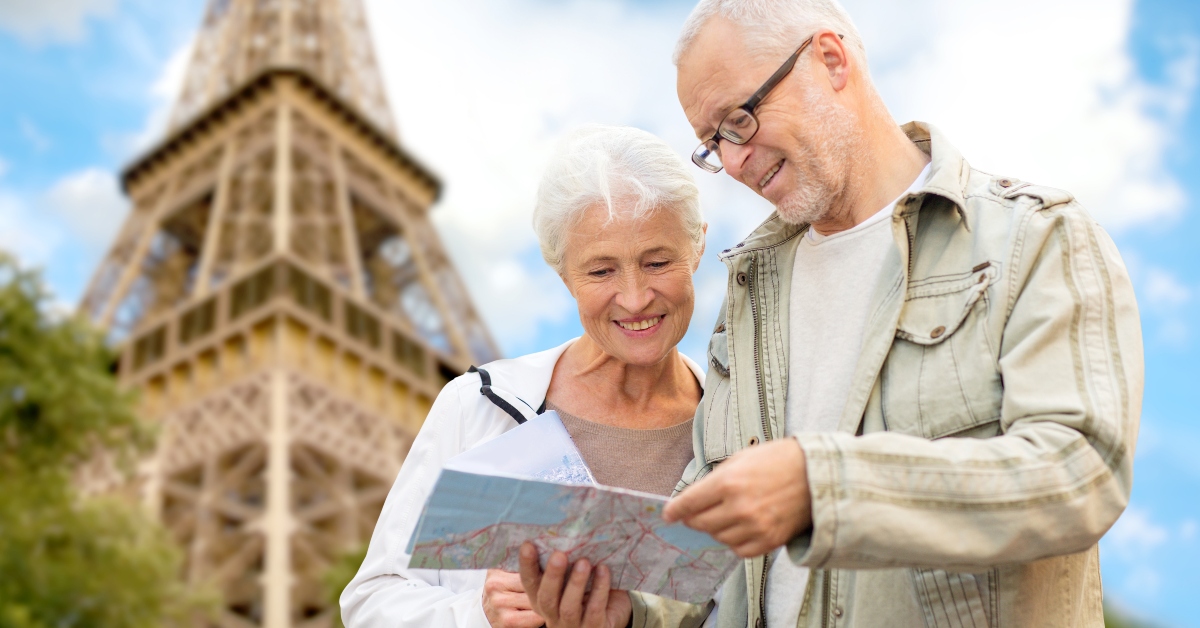
Bottom line
For some people, traveling to Europe is the dream of a lifetime, but if you identify with any of the issues we listed above, you probably aren’t one of them.
Instead of visiting the region out of obligation or to fit in with the crowd, focus on finding travel opportunities closer to home to earn miles and travel more to places you want to go.
More from FinanceBuzz:
- 7 things to do if you're scraping by financially.
- 6 genius hacks Costco shoppers should know.
- Can you retire early? Take this quiz and find out.
- Are you a homeowner? Get a protection plan on all your appliances.
More for You
Actor Chance Perdomo dies in motorcycle accident
McDonald’s brings beloved breakfast sandwich back to select locations
How to get rid of stink bugs, according to an entomologist
Manon Fiorot transported to hospital following win in UFC Atlantic City main event
Nate Berkus And Jeremiah Brent's Simple Tip For Making Any Home Smell Amazing
18 Things You’ll Still Want to Do After 60 But Probably Can’t
Netflix Drama: 25 Gripping Series That Will Keep You on the Edge of Your Seat
25 legendary musicians you might not know were LGBTQ+
Democrats unite against RFK Jr.
Zendaya Wears a Stormy Gray Gown with a Heart-Racing Deep V-Neckline
Can You Eat Potatoes with Sprouts?
10 Hiding Spots Burglars Always Look First
11 Actors Who Refused To Return For Reboots Of Their Iconic Movies And TV Shows (And Why)
Best Anime Adoptive Mothers & Stepmoms
Joe Biden Faces 'Clear' Evidence He Lied in Impeachment Probe—Attorney
How Long Should I Take to Walk a Mile?
How to Get Rid of Ants in Your House and Yard
Steelers 'Not Really Interested' In Big Name Quarterback Michael Penix Despite Meeting
Reacher Season 3: Expected Release, Plot, Cast & News
Vampire Frenzy: 16 Addictive Series That Suck Viewers into Their World

IMAGES
VIDEO
COMMENTS
The flag of Europe or European flag consists of twelve golden stars forming a circle on a blue field. It was designed and adopted in 1955 by the Council of Europe (CoE) as a symbol for the whole of Europe.. Since 1985, the flag has also been a symbol of the European Union (EU), whose 27 member states are all also CoE members, although in that year the EU had not yet assumed its present name or ...
Flags of European countries. All country flags of this region are more or less known worldwide. Of course, the most recognized of them is the United Kingdom's Union Jack, with its unique design combining 3 different crosses in one field. Its design also used in the national flags of other countries the former members of the British Empire.
First on our map of Europe with flags is the iconic flag of Italy, known as 'Il Tricolore'. This flag showcases a vertical tricolor of green, white, and red. The green represents the country's land, the white symbolizes the snow-capped Alps, and the red denotes the bloodshed during the Wars of Italian Independence.
List of all European countries with flag images, names and main information.
Each European flag is a visual representation of a country's history, culture, and identity. From the tricolors of France and Italy to the distinct cross of England, there's a fascinating tale behind each one. As you delve into the world of European flags, you'll find that they're more than just pieces of fabric.
Stripes of red and white have been a collective emblem of Austria for over 800 years, and they were first used on the flag in 1191. According to long-established legend, the red and white flag was designed to resemble the bloodstained white coat worn by the Duke of Austria during a fierce battle. 1918-1920. 1991-.
The European flag symbolises both the European Union and, more broadly, the identity and unity of Europe. EU motto "United in diversity" was adopted as the European Union's motto in 2000. Learn more here. Further information. The Euro. Share this page This site is managed by: Directorate-General for Communication.
Below you can find an image with the flag of all the European countries. Hope it's useful. 2. FLAGS OF THE COUNTRIES OF EUROPE ( 2023) Click to see full size. 3. NOTES. Yellow-marked countries belong both to Europe and Asia (they're Eurasian countries). All flags have been resized to a 10:7 format.
The flags adorning the nations of Europe serve as more than mere pieces of cloth; they are the tangible embodiment of a nation's identity, sovereignty, and solemnity. Each fluttering emblem carries within its intricate design a rich tapestry of historical and cultural narratives, encapsulating the essence of the country it represents.
The European flag. Against the background of blue sky, the stars form a circle, symbolising union. The number of stars is fixed, twelve being the symbol of perfection and completeness and bringing to mind the apostles, the sons of Jacob, the labours of Hercules, the months in the year, etc. From its foundation in 1949 the Council of Europe was ...
Challenge yourself with an engaging multiple-choice quiz game, including the 46 country flags of Europe. Test your knowledge and train your brain!
Here's a fun and simple quiz where you can test your knowledge of flags in Europe and challenge your friends as well. This quiz is based on the United Nation's list of European countries. Each question will display a flag below and a box with 4 multiple choices. Only one alternative is correct. When you've made your choice, an answer box ...
How well do you know the flags of Europe? Take our European flags quiz and test your knowledge! Can you score 10 correct answers in this fun flag quiz? Skip to content. 197 Travel Stamps. Knowledge About Every Country. ... Test Your Knowledge Posted in Weekly Travel Quiz By 197travelstamps Posted on June 7, 2018 October 20, 2019 Tagged Europe.
The idea behind the pan-Slavic colors was to emphasize the Slavic roots of the Central and Eastern European countries and Russia. The contemporary Slovakia flag comprises three horizontal lines: white, red, and blue. Their meaning is derived from medieval heraldry, where white stands for purity and truth, red reminds of courage and strength ...
Flag - Colors, Symbols, Designs: The colours and designs of national flags usually are not arbitrarily selected but rather stem from the history, culture, or religion of the particular country. Many flags can be traced to a common origin, and such "flag families" are often linked both by common traditions and by geography. The oldest European flags still in use are those that display the ...
Map of Europe with countries and capitals. 3750x2013px / 1.23 Mb Go to Map. Political map of Europe. 3500x1879px / 1.12 Mb Go to Map. Outline blank map of Europe. 2500x1342px / 611 Kb Go to Map. European Union countries map. 2000x1500px / 749 Kb Go to Map. Europe time zones map.
Here are some basic guidelines for how many places you can visit depending on how much time you have: With 7 days: 2 cities OR one city with day trips. With 10 days: 3 cities OR 2 cities with day trips. With 14 days: 4 cities OR a road/train trip through one or two countries. Barcelona, Spain.
Euros in Europe. of 100. United States. Browse Getty Images' premium collection of high-quality, authentic Europe Flag Map stock photos, royalty-free images, and pictures. Europe Flag Map stock photos are available in a variety of sizes and formats to fit your needs.
Switzerland. Türkiye. Ukraine. United Kingdom. Outermost Regions. Get inspired for your next trip to Europe. Plan your vacation to discover European culture, heritage, architecture, gastronomy and stunning landscapes.
326,251 europe travel banner stock photos, 3D objects, vectors, and illustrations are available royalty-free. ... Vector Illustration Giant European Flag Set With Europe Country Flags. Big Collection of Travel posters to country. Vector Flat illustration. Travel to World. Road trip. Big set of famous landmarks of the world.
Sustainability At Flag, we strive to make a positive impact on the environment and local communities through our sustainable tourism practices.We recognize the importance of responsible travel and are committed to working with our partners to ensure that our tours are eco-friendly. We invite you to join us in our mission to promote sustainable tourism
travel; world; europe flag; european union flag; european union; flags of the world; american flag vector; american flag; flag banner; checkered flag; european map; indian flag; Previous Next. Next Page. Next 1 Previous. of 50. Free Download for Pro Subscribers! 500 Social Media Stories Bundle Vol.2 View & Download. Available For: Our Network.
A container ship crashed into a major bridge in Baltimore early Tuesday, causing its collapse into the Patapsco River. A livestream showed vehicles traveling on the Francis Scott Key Bridge just ...
The biggest operational crane on the U.S. Eastern Seaboard will begin clearing the wreckage of Baltimore's Francis Scott Key Bridge days after a cargo ship crashed into it, sending the span ...
Check out our europe travel flags selection for the very best in unique or custom, handmade pieces from our wall hangings shops.
A trip outside the country can help put domestic gas pump costs into perspective. In Italy, for instance, a gallon costs around $5.96. In France, $5.54.